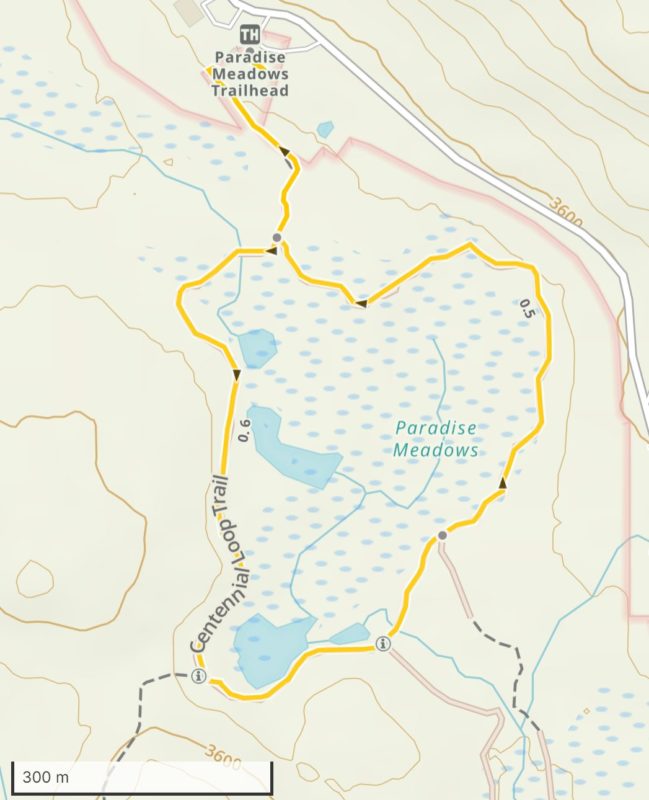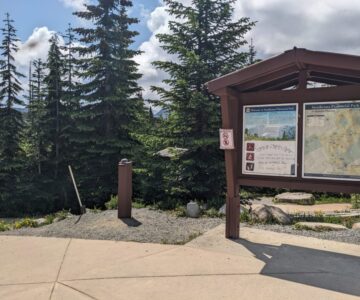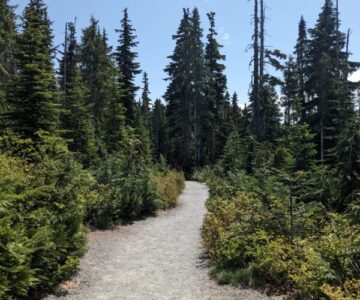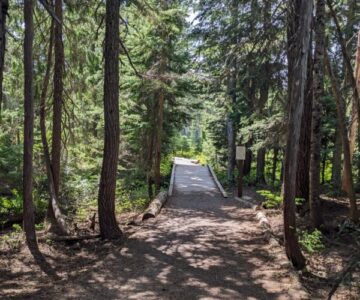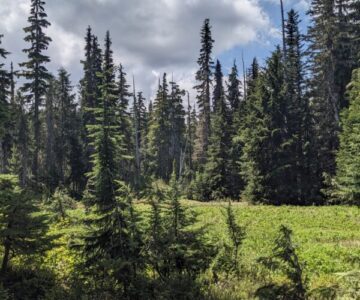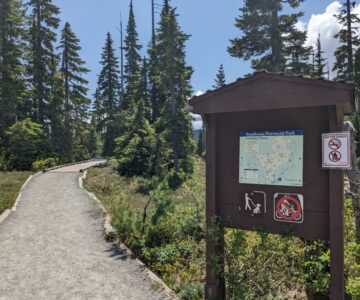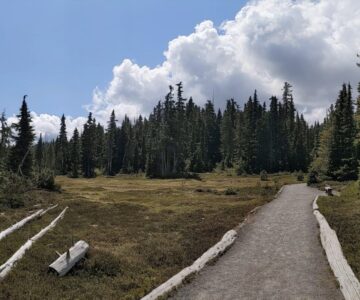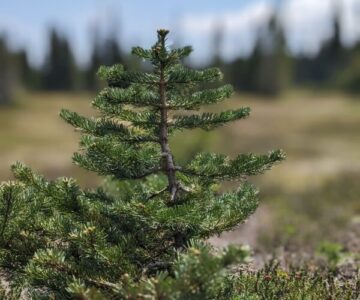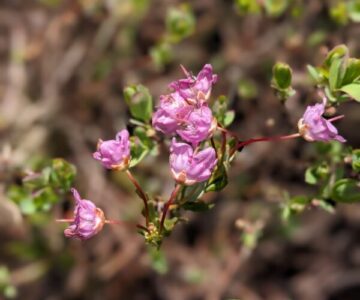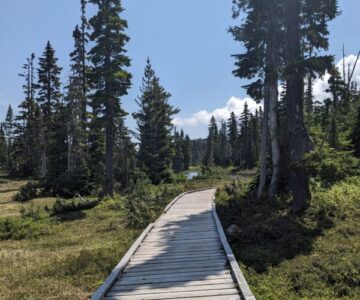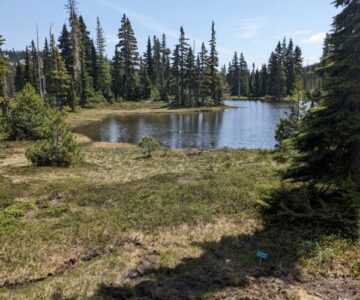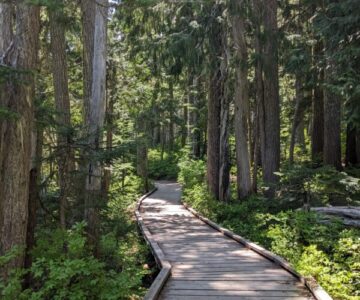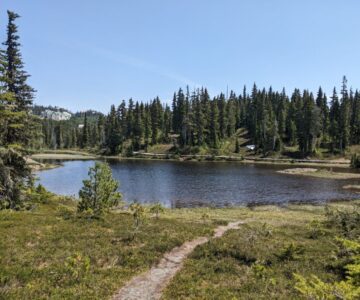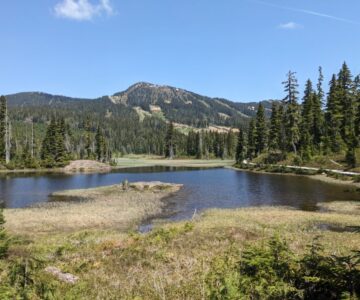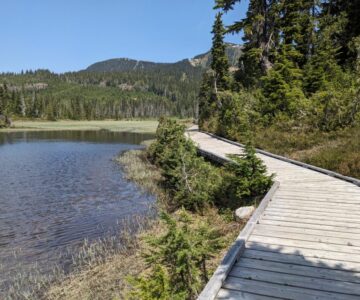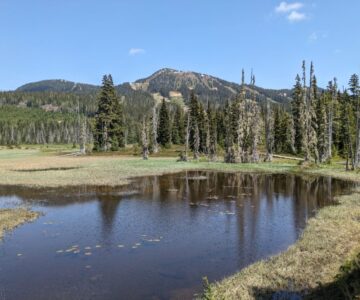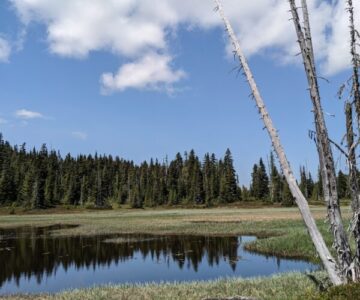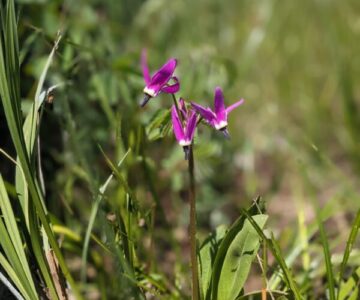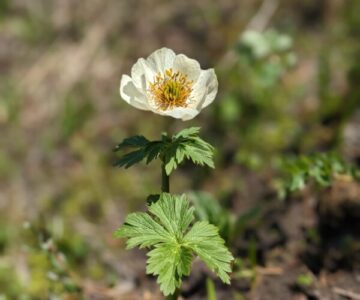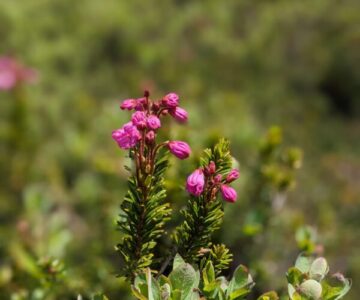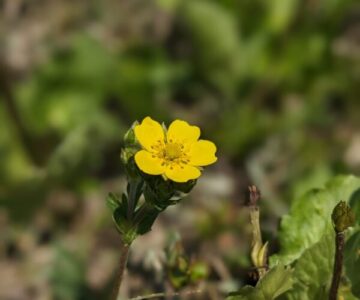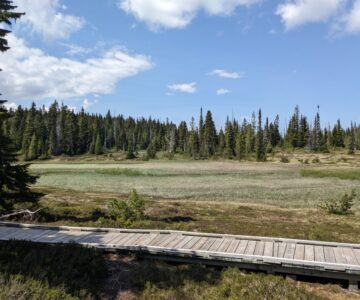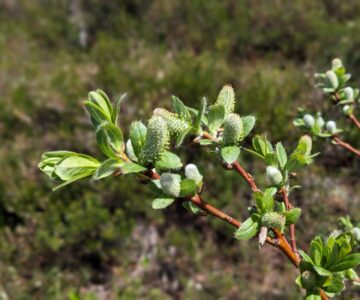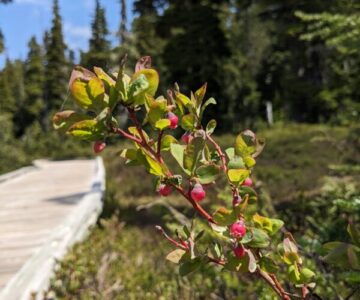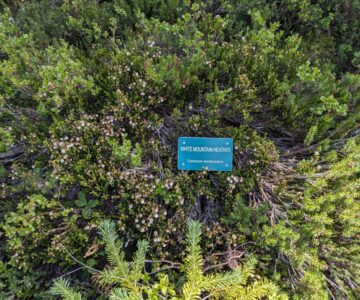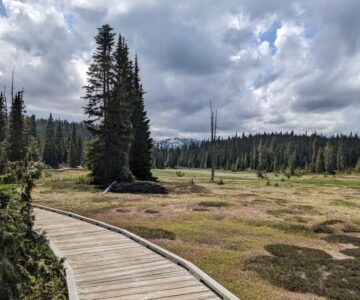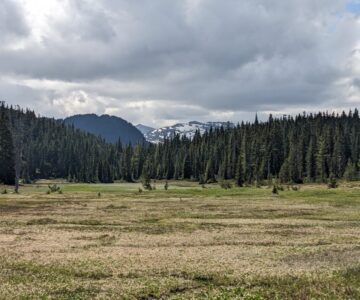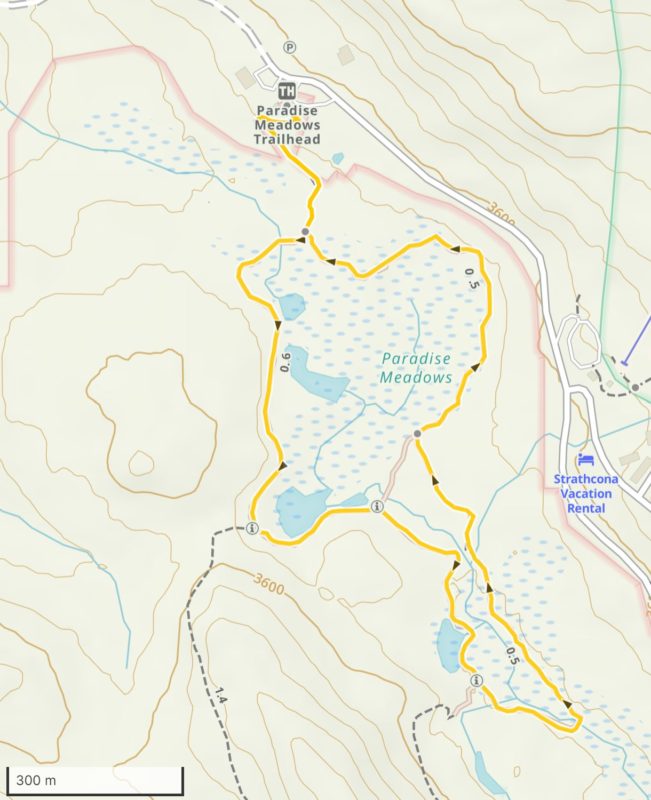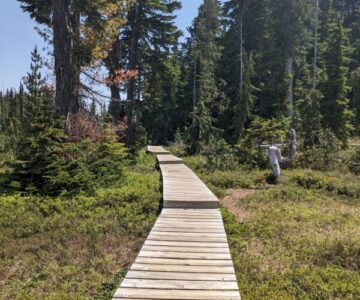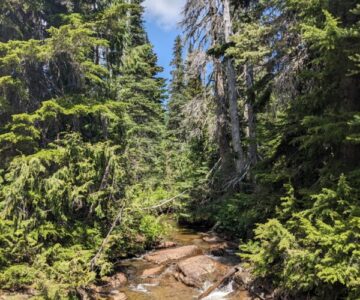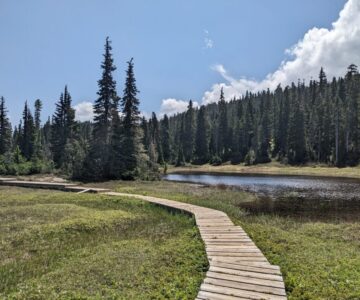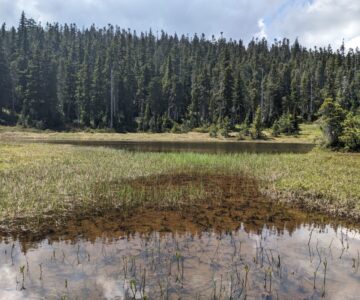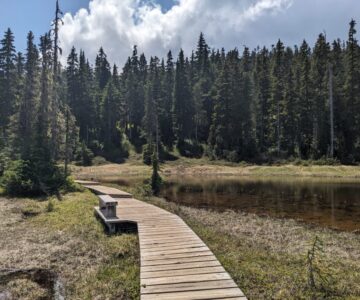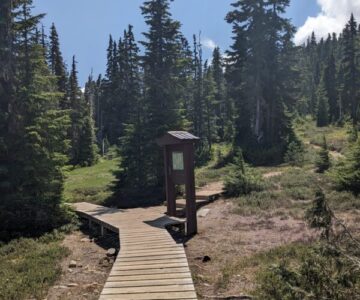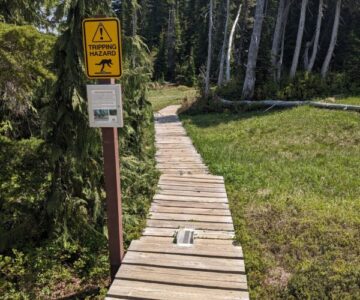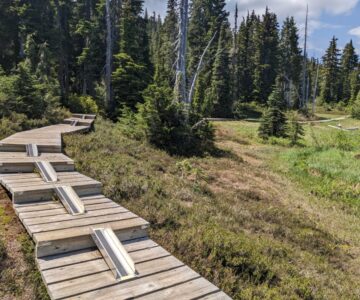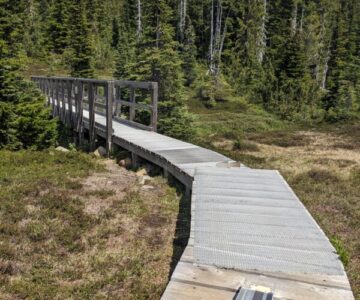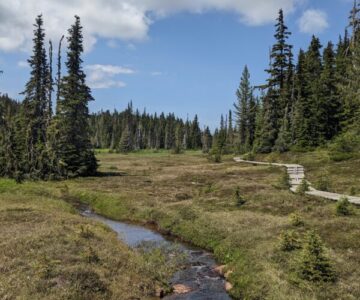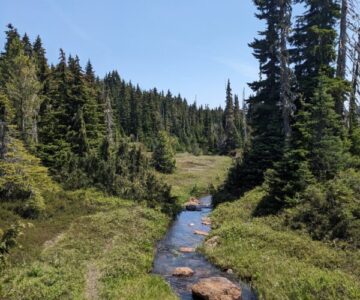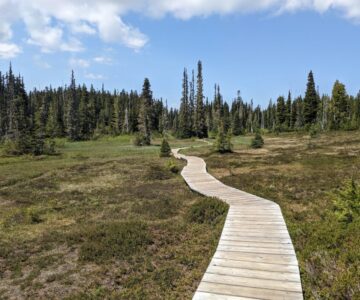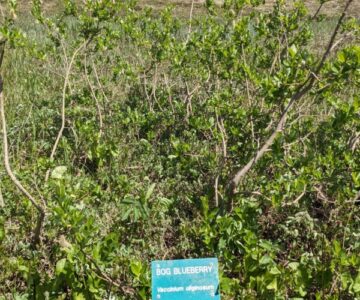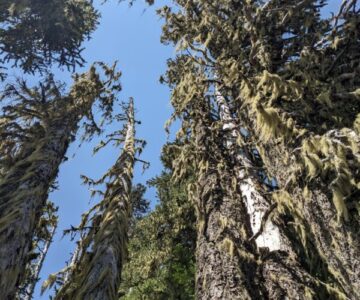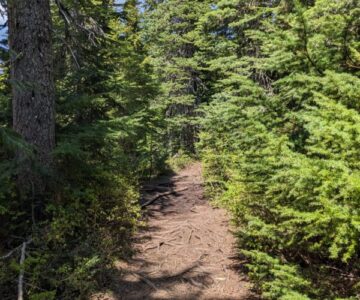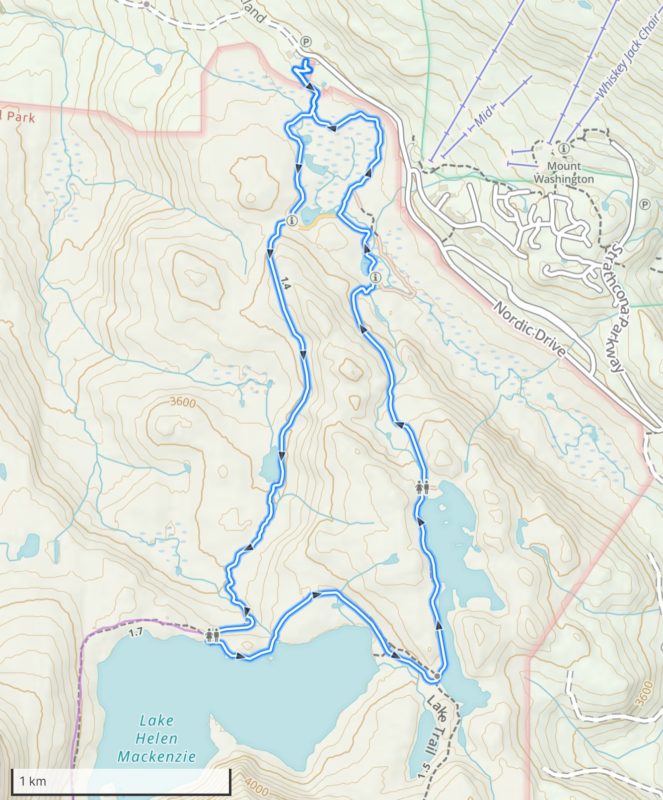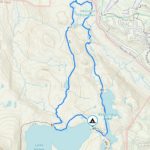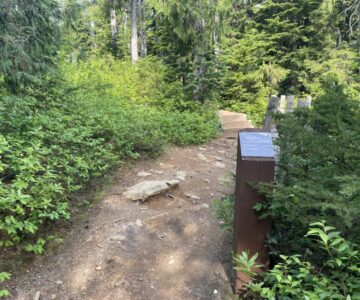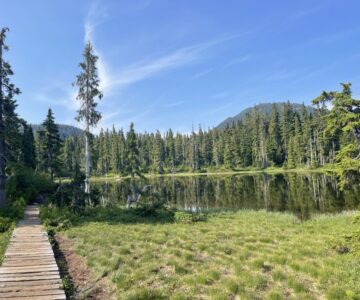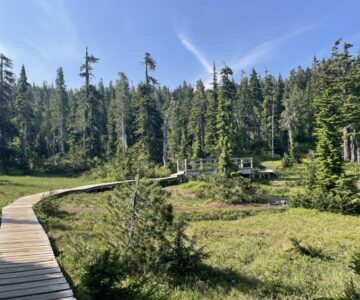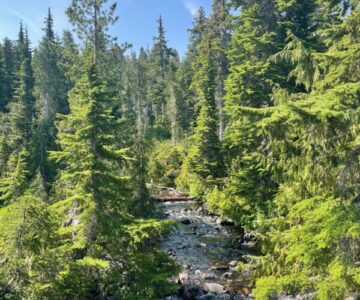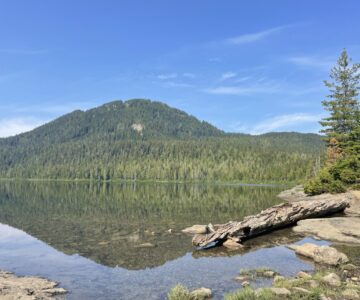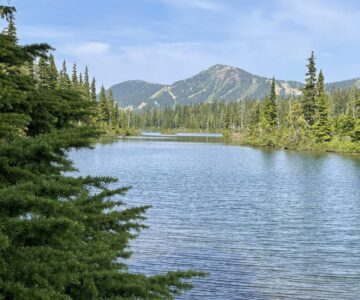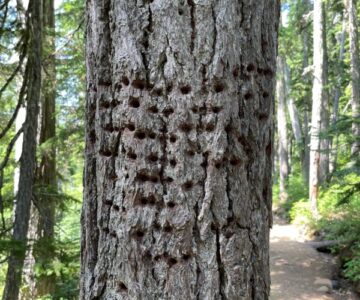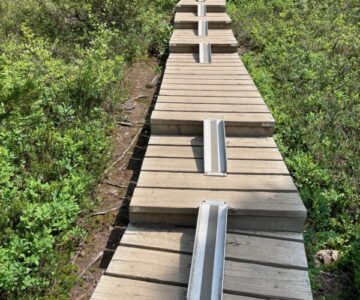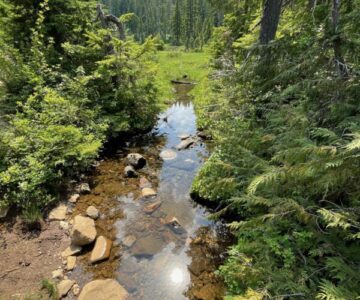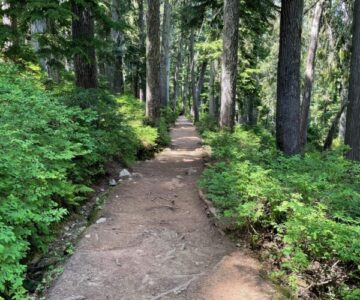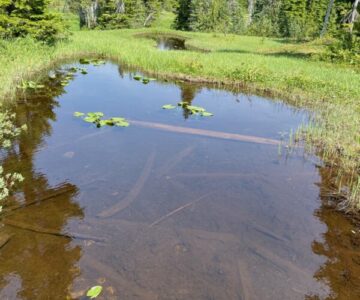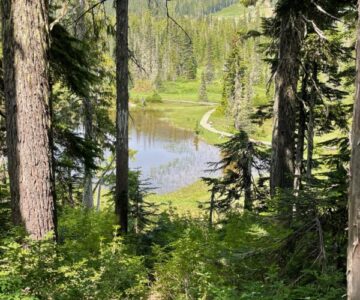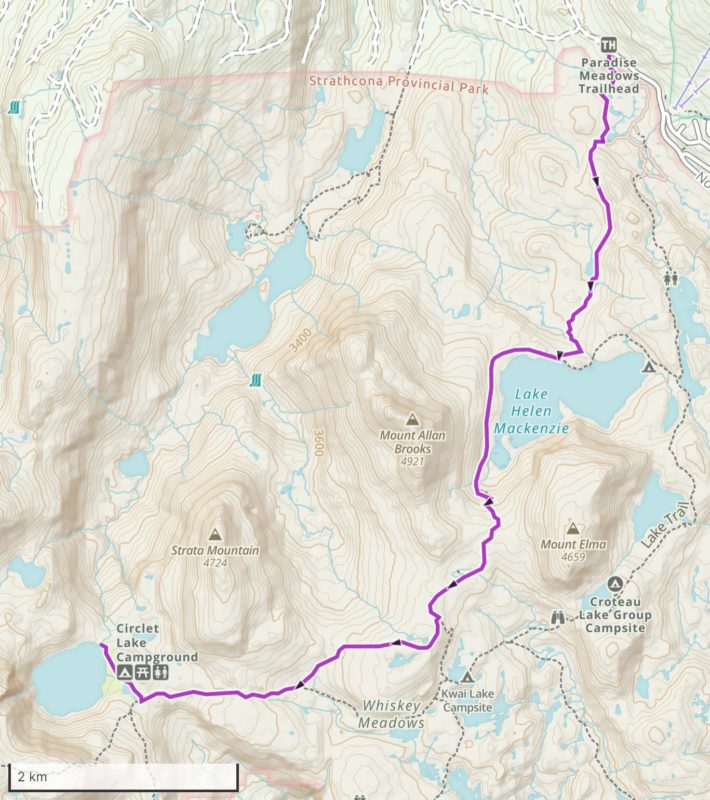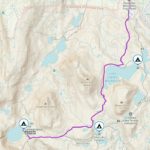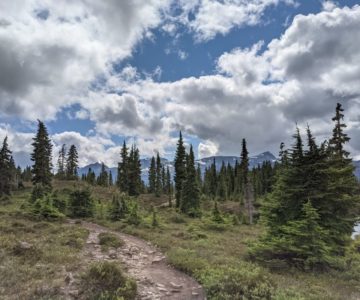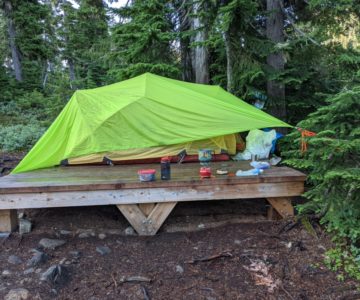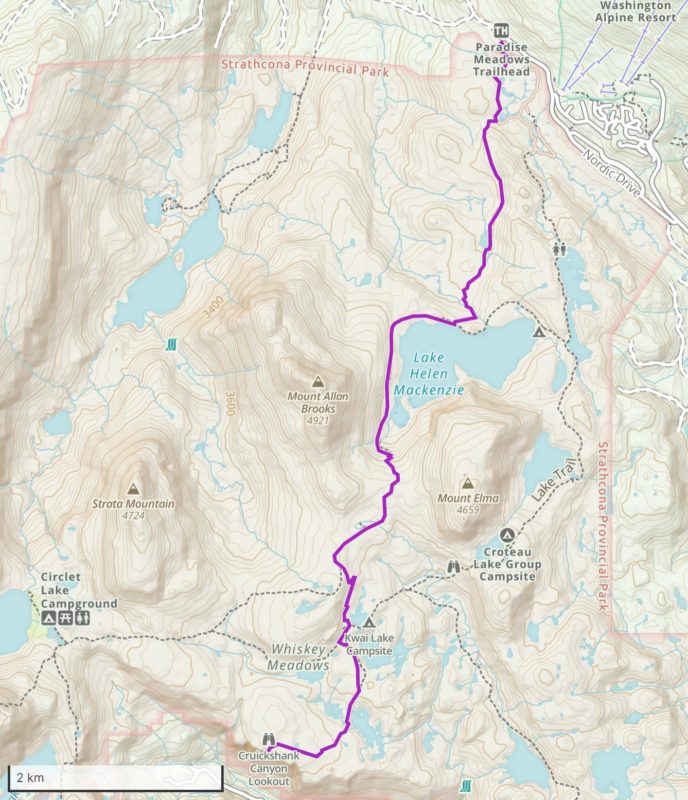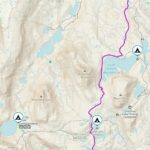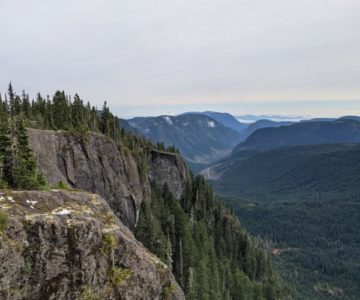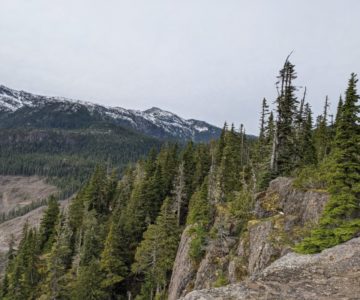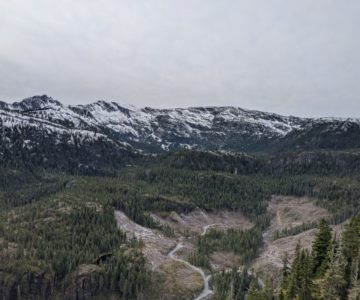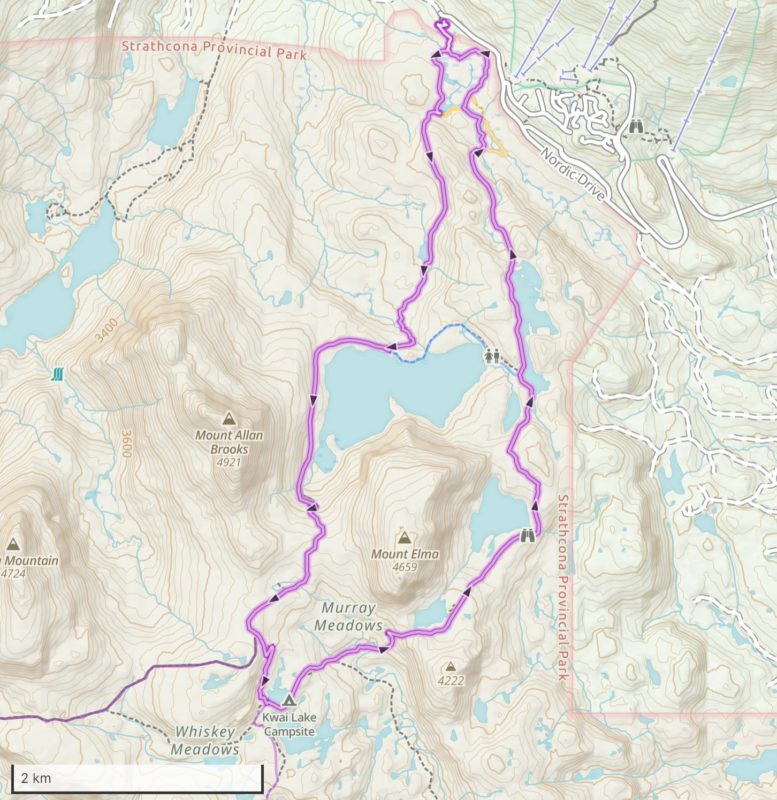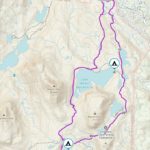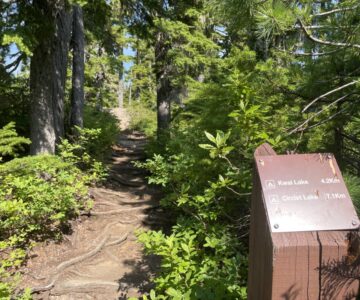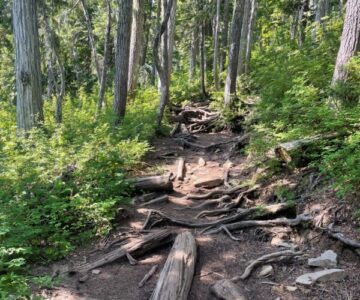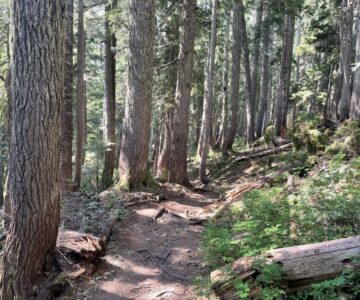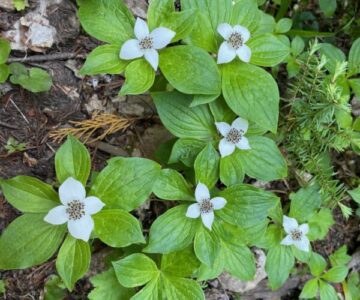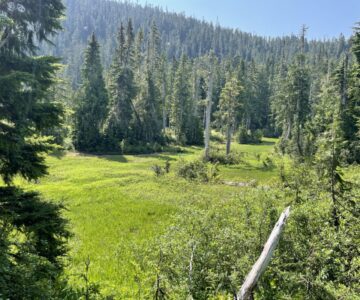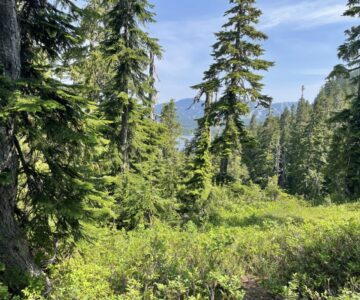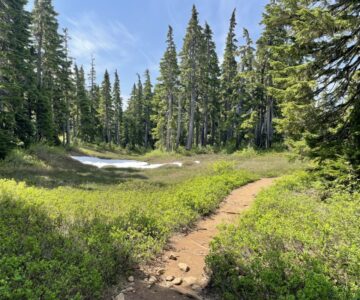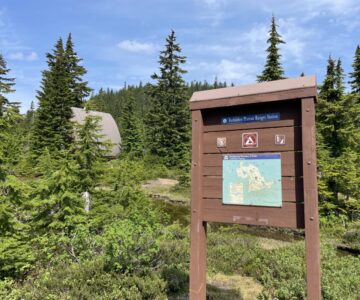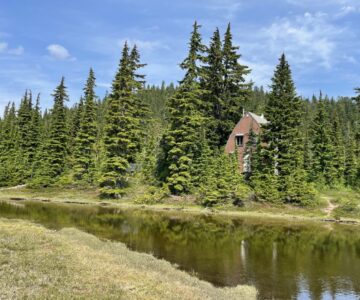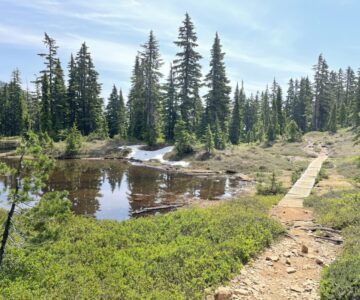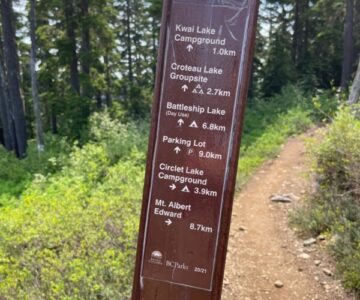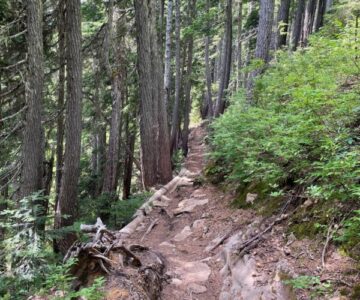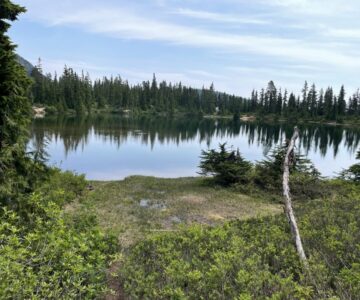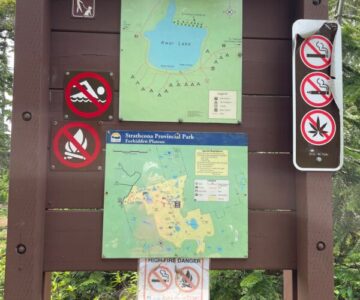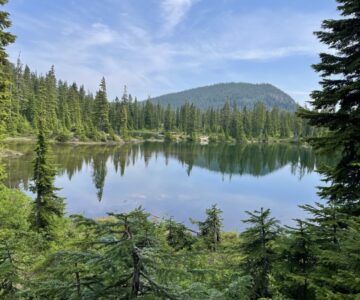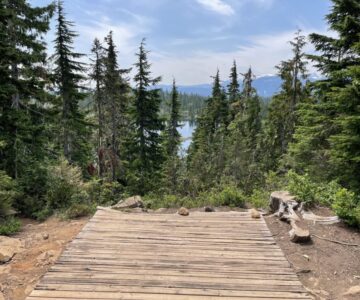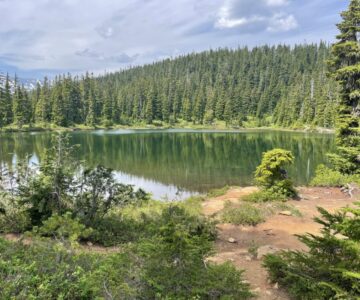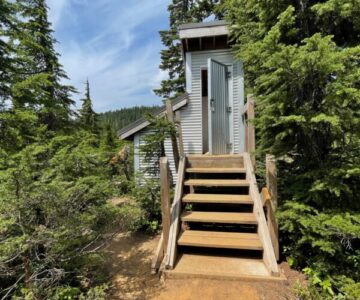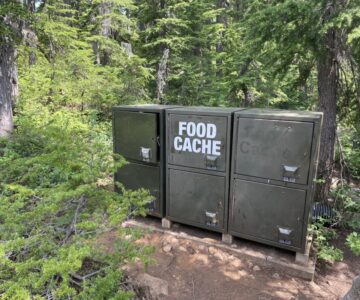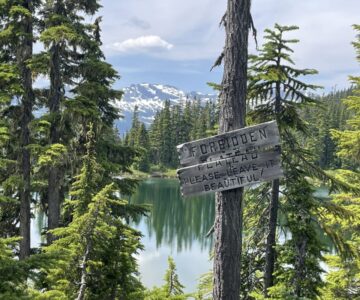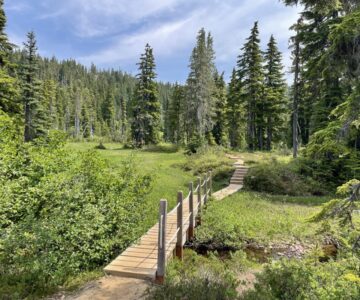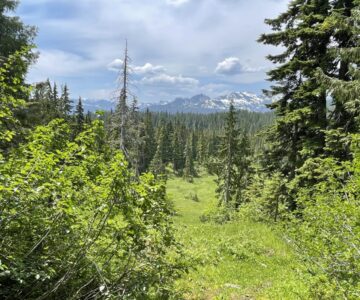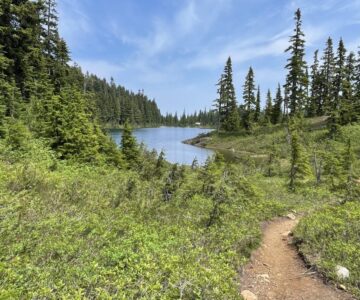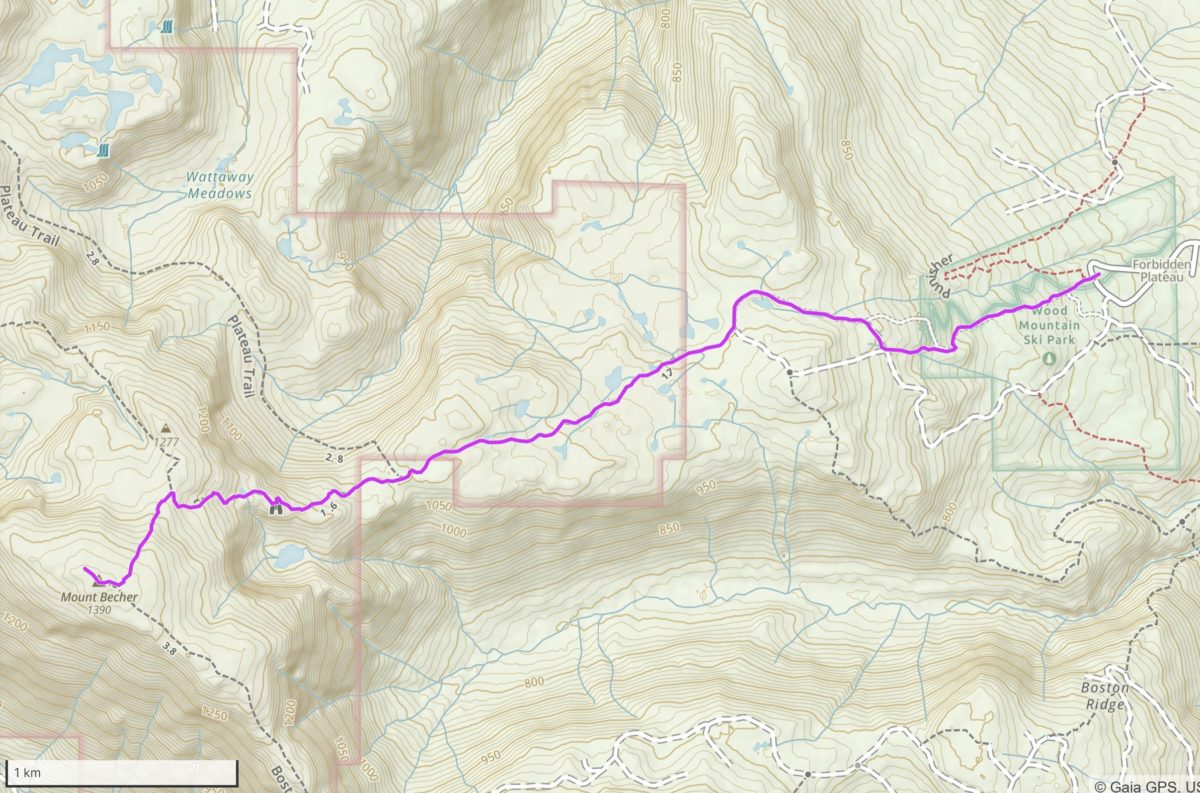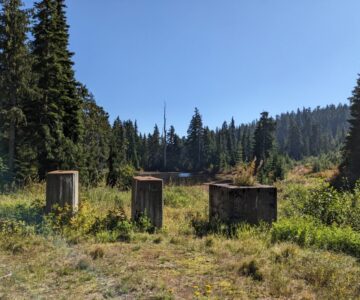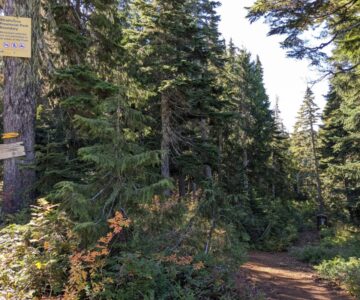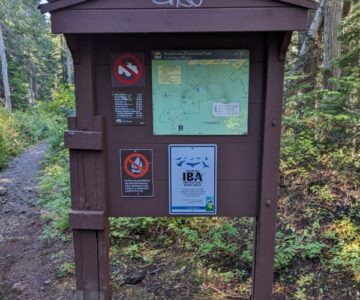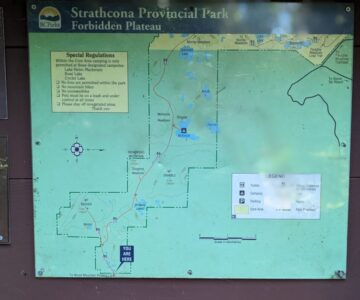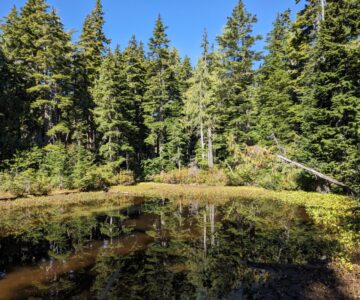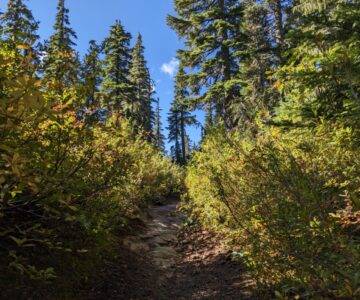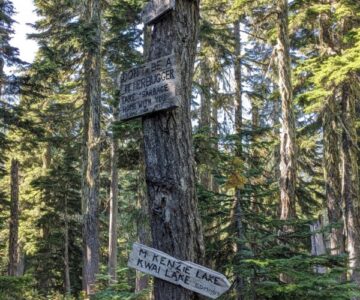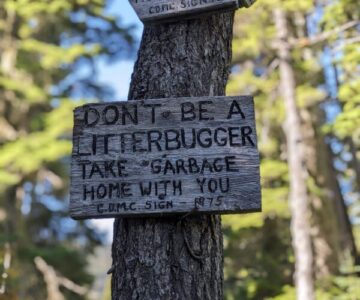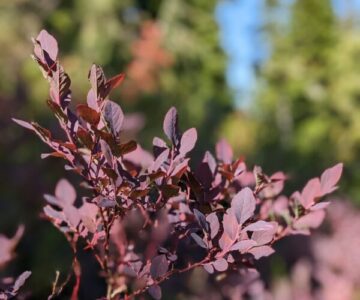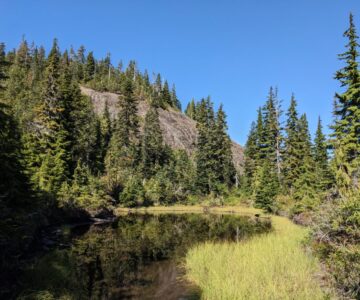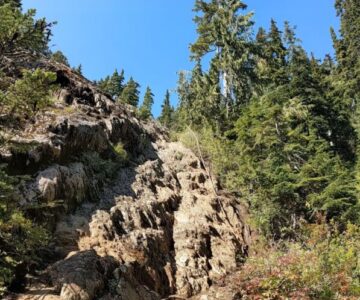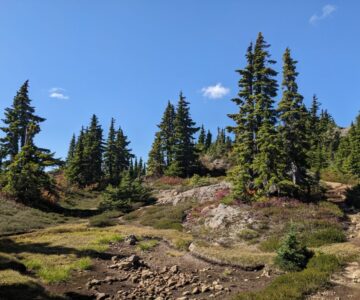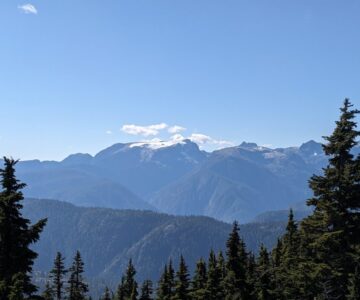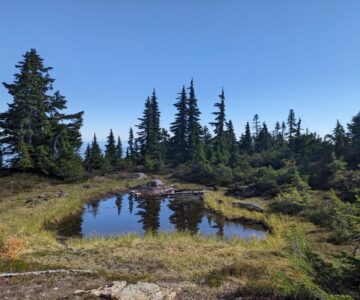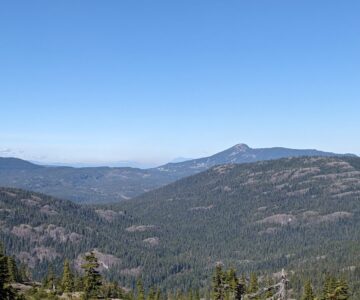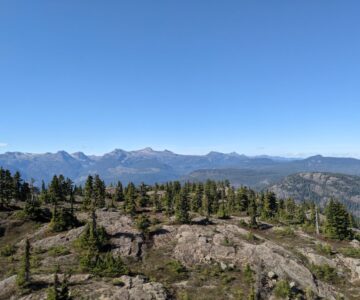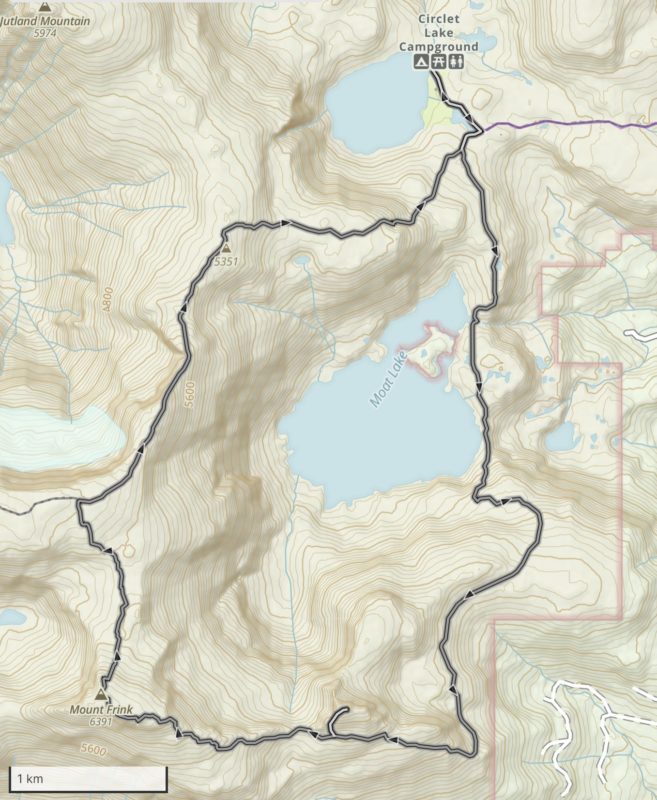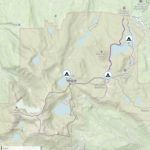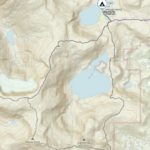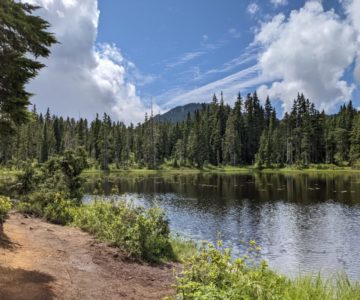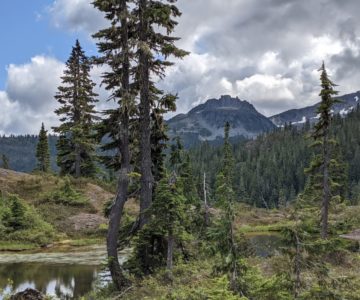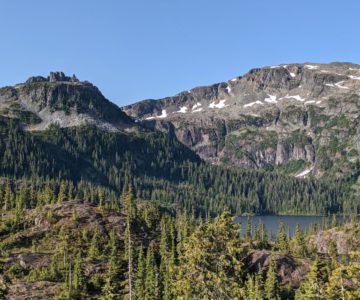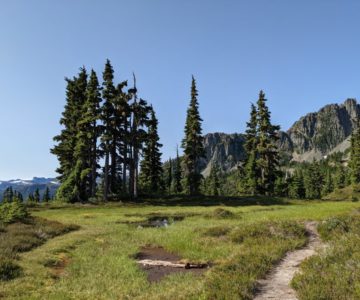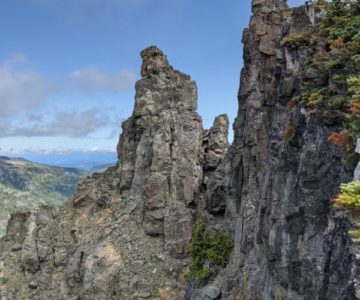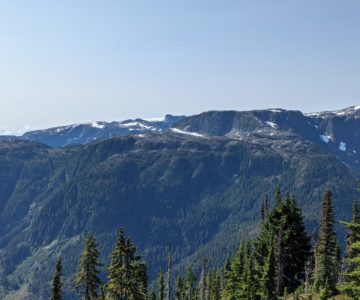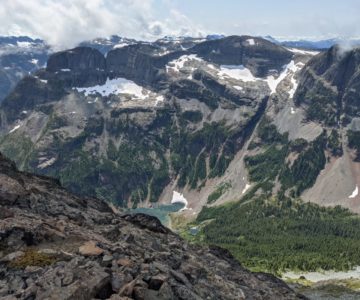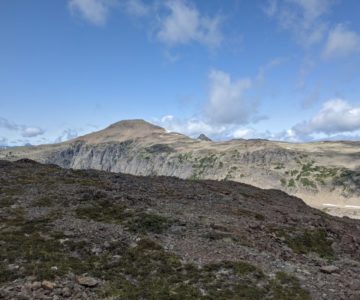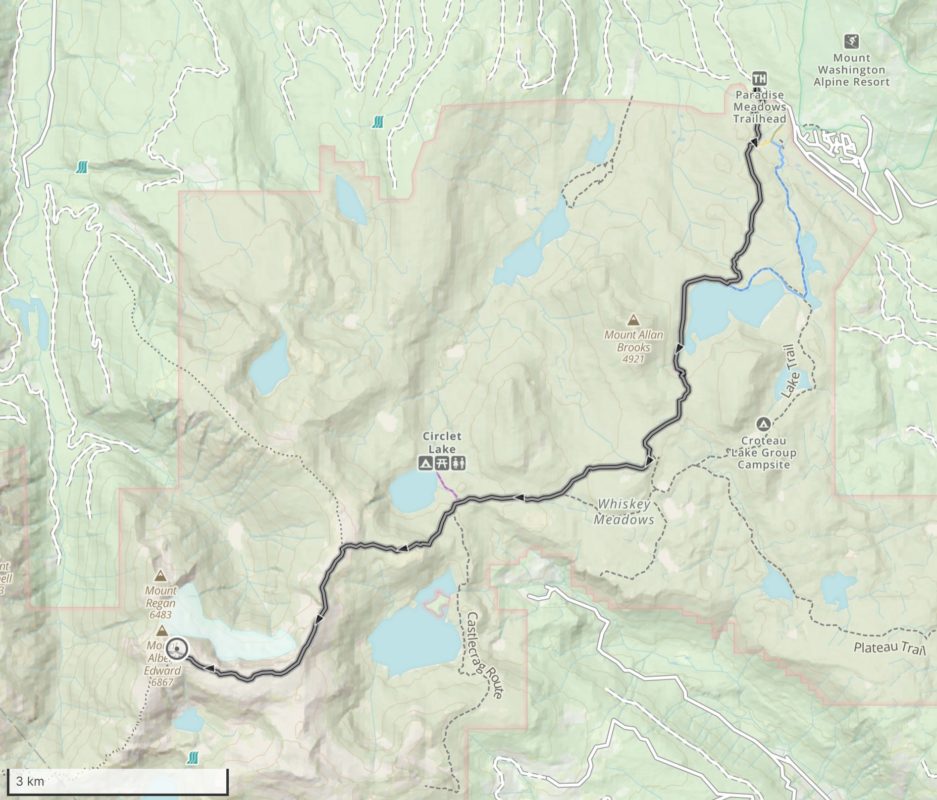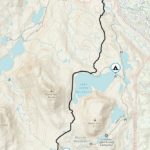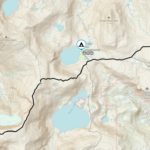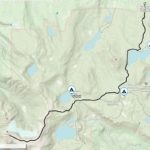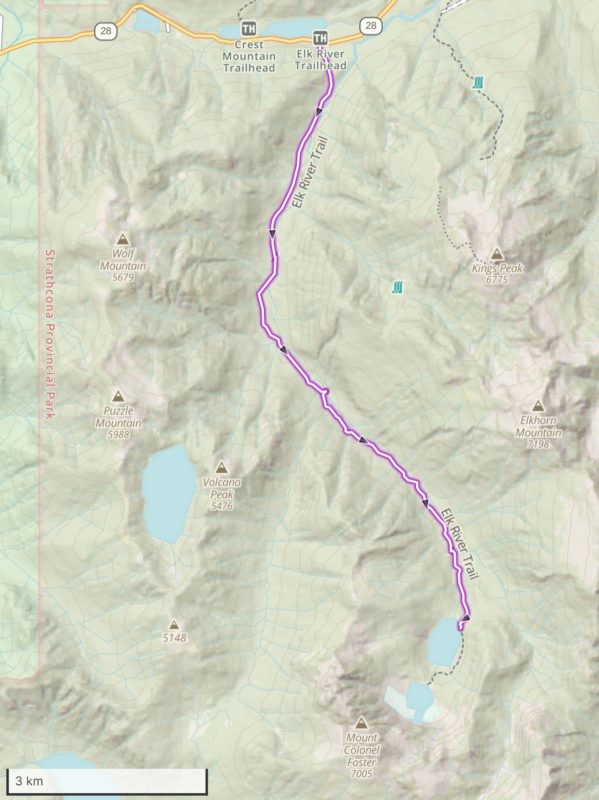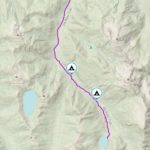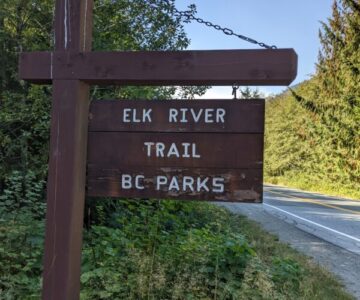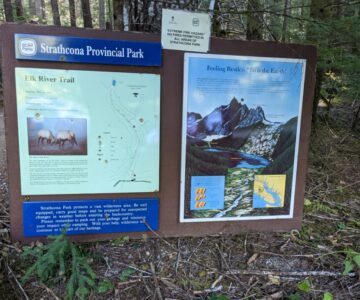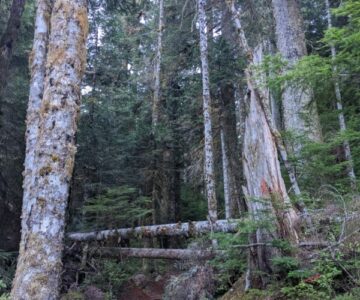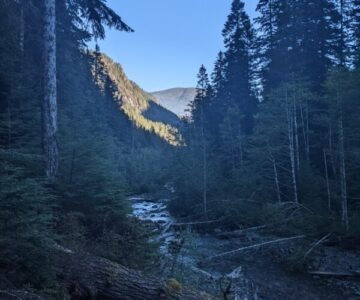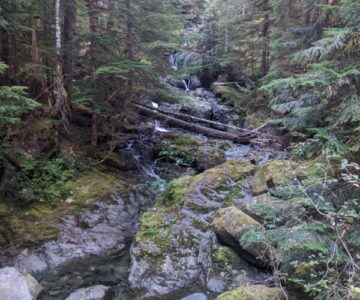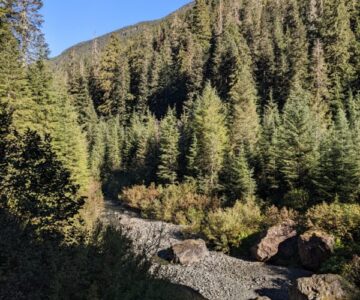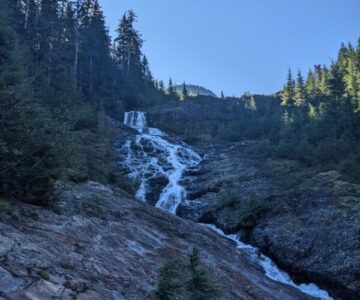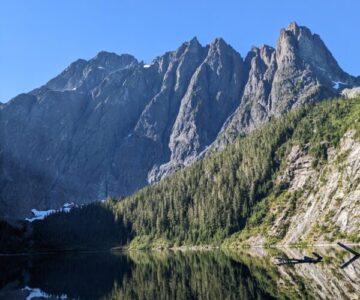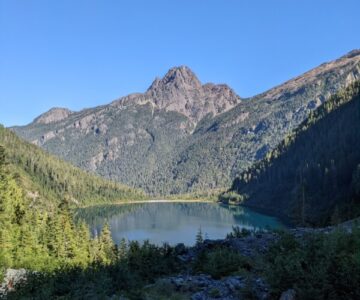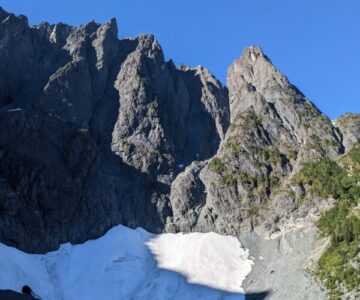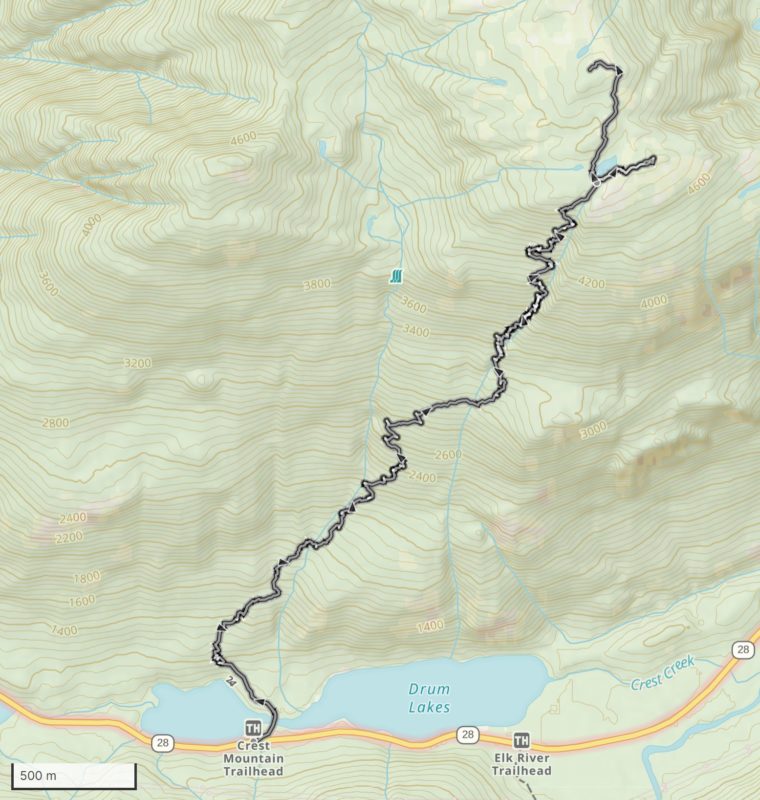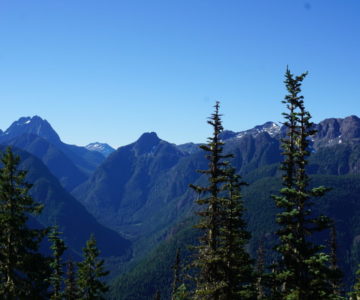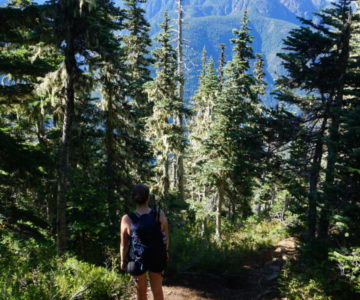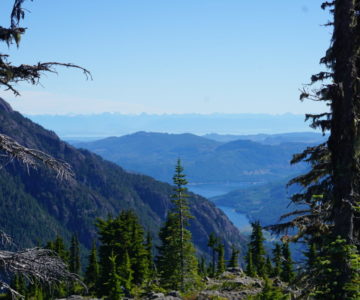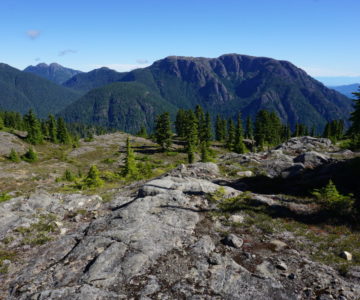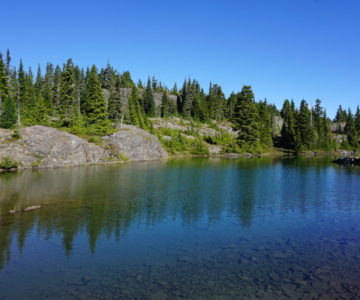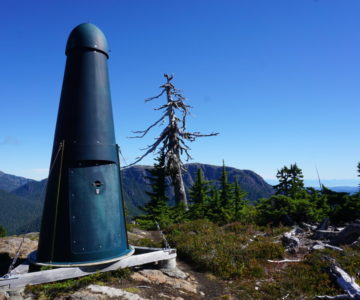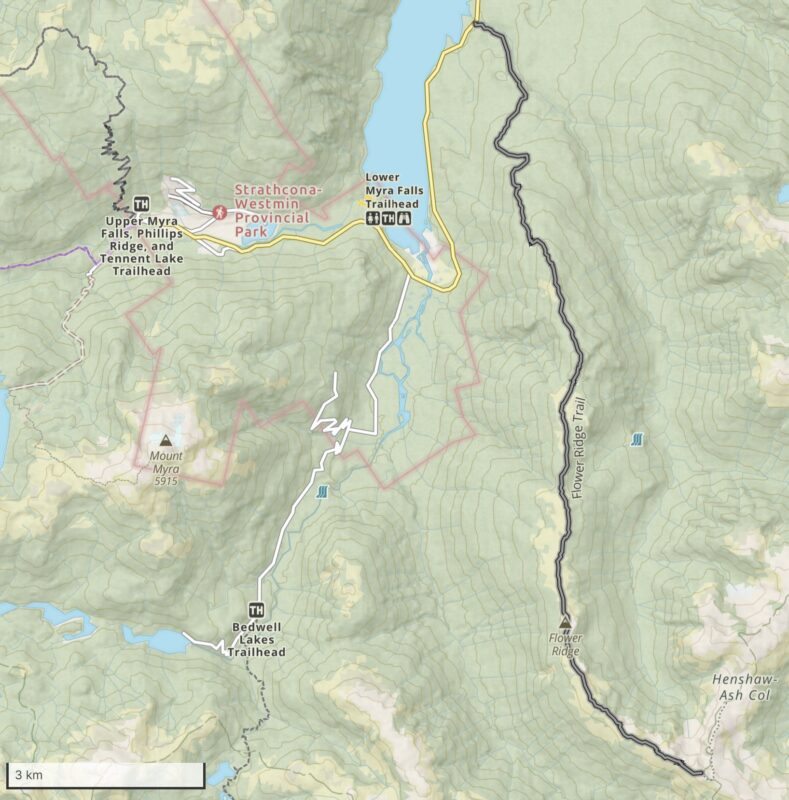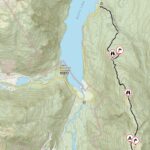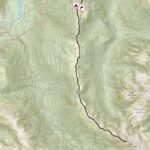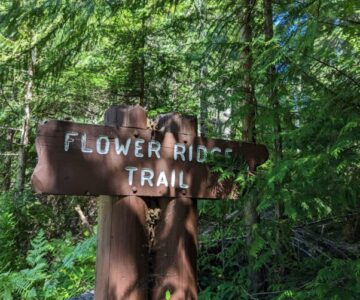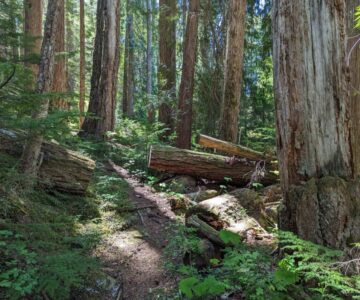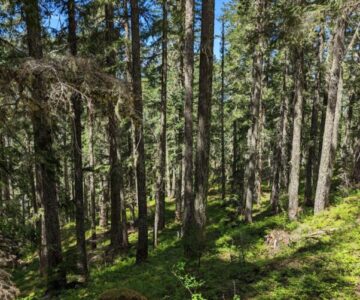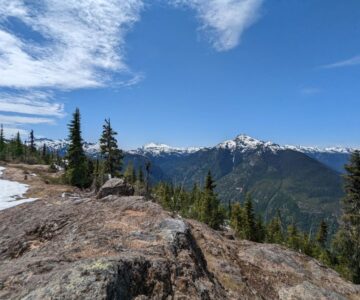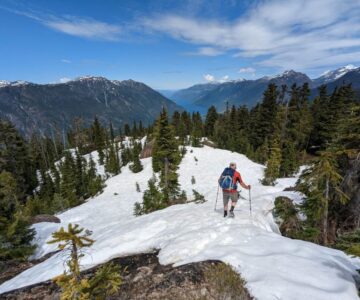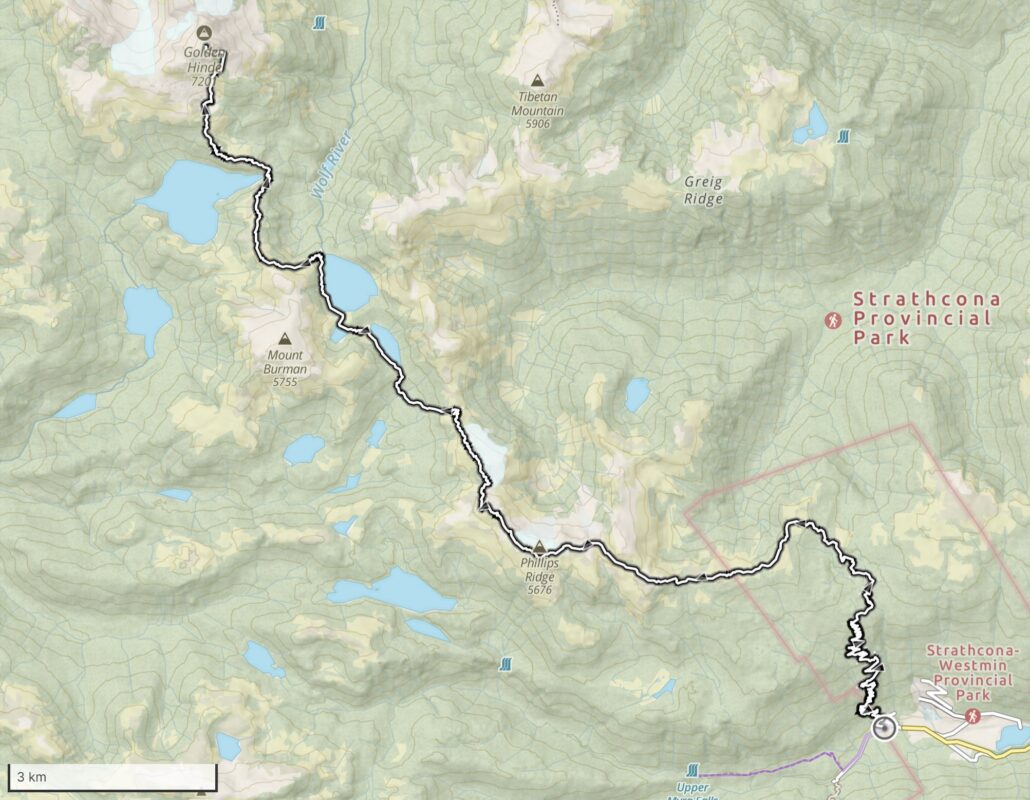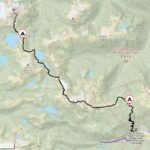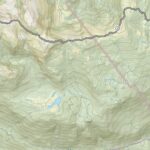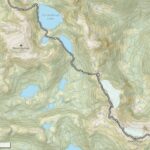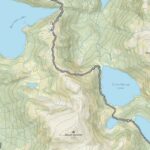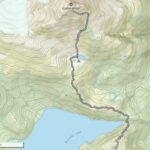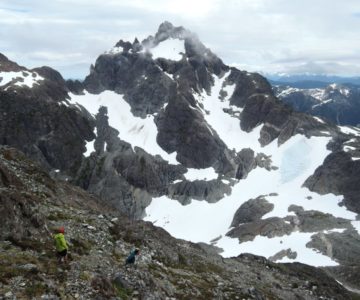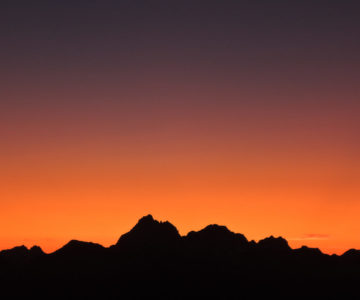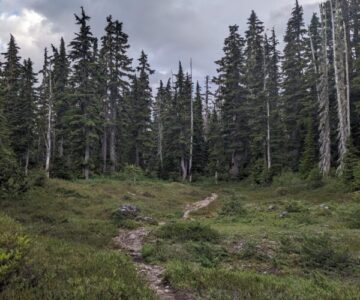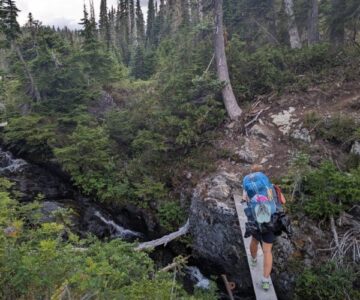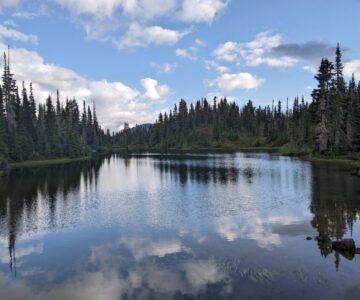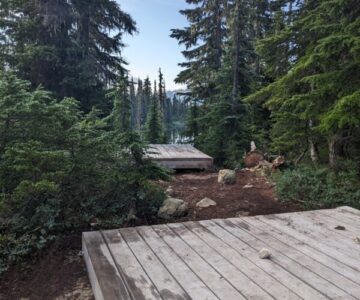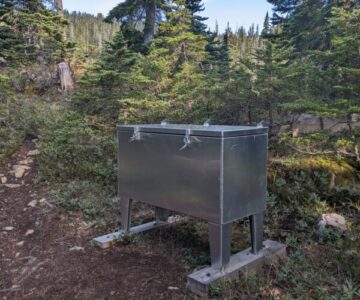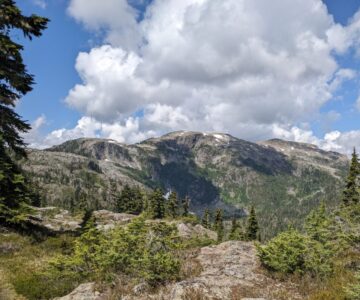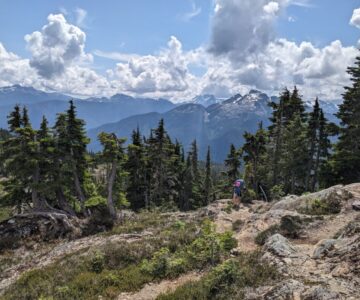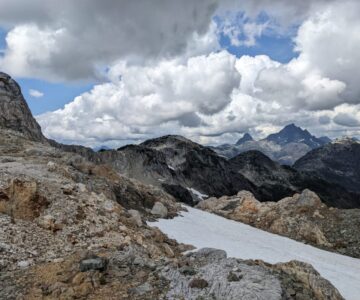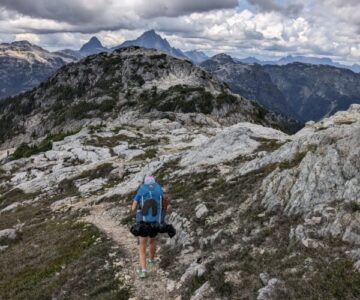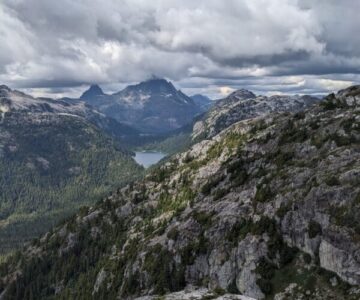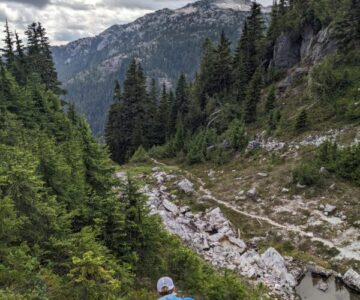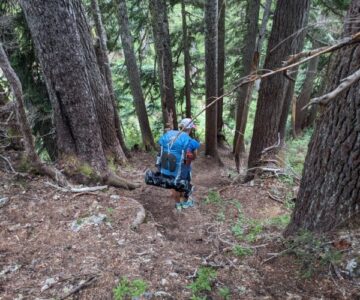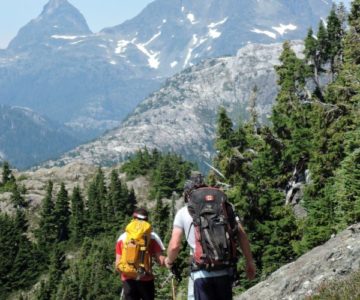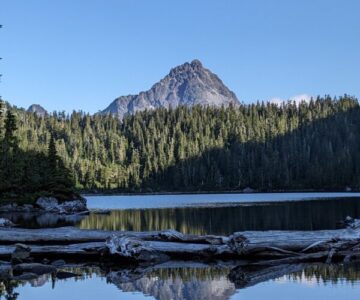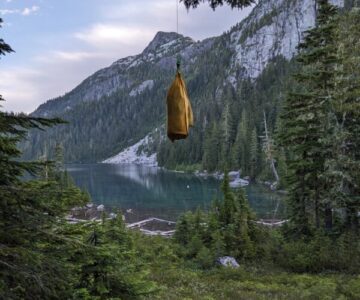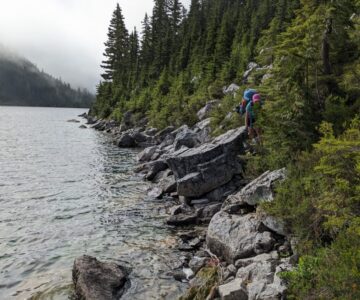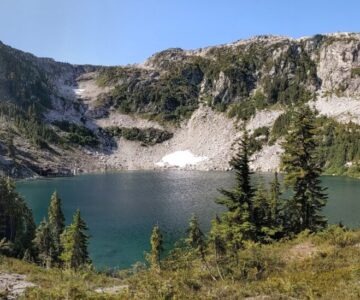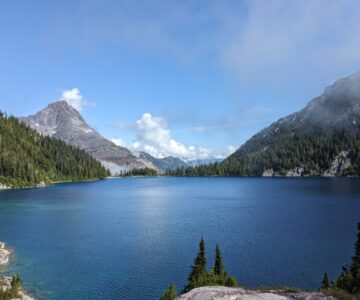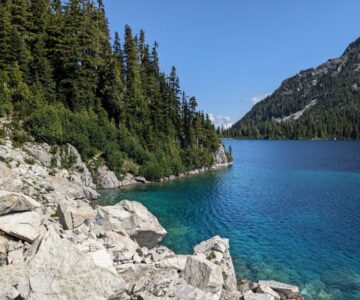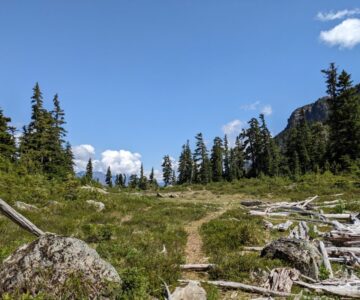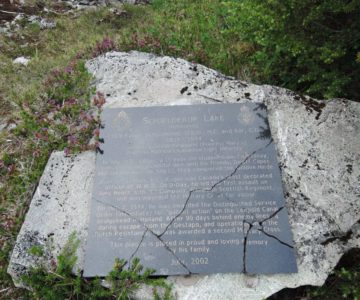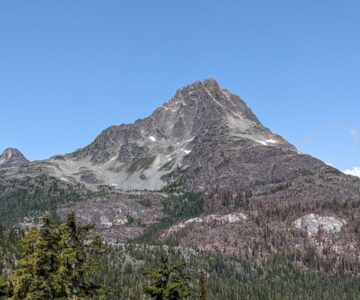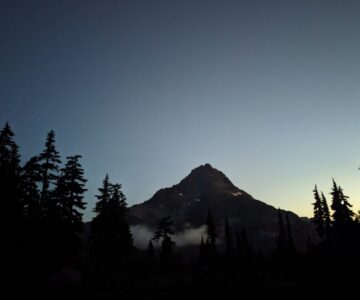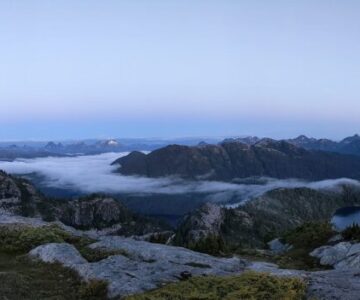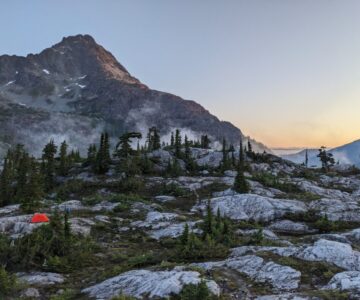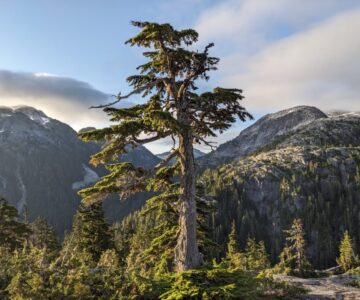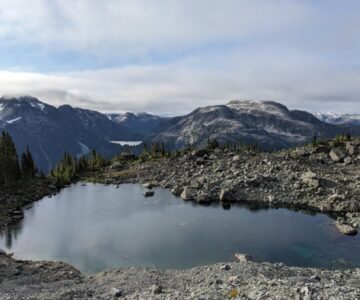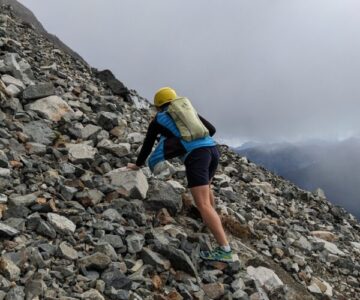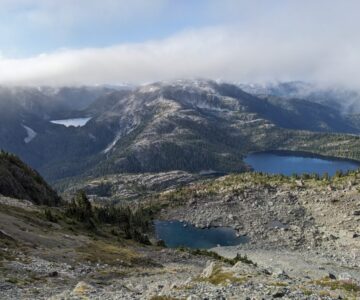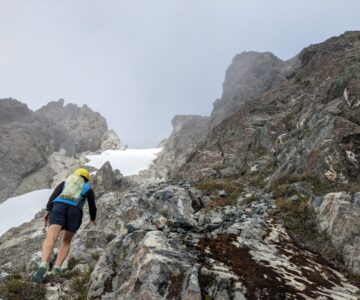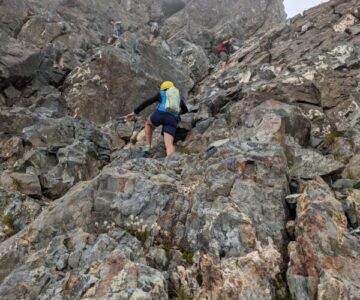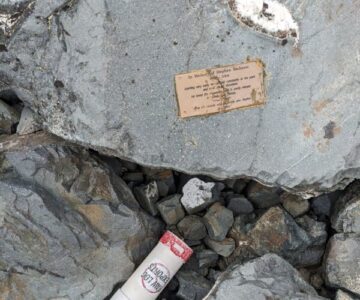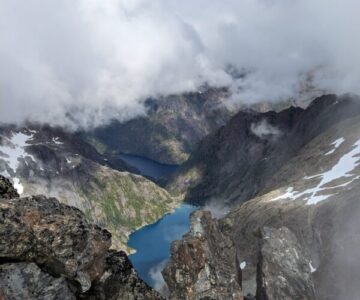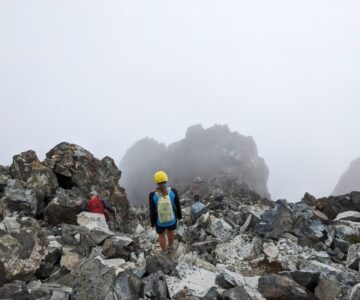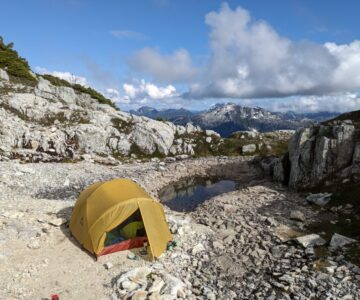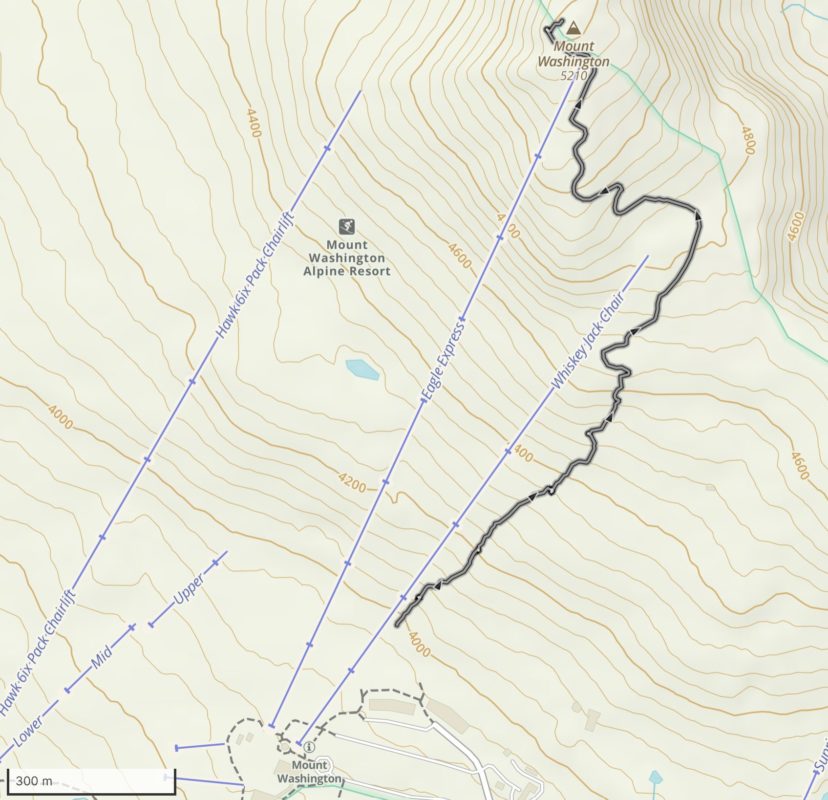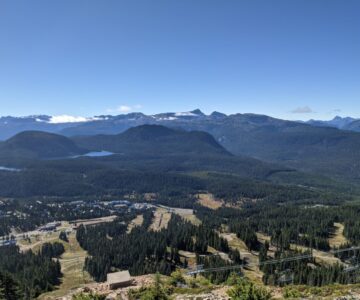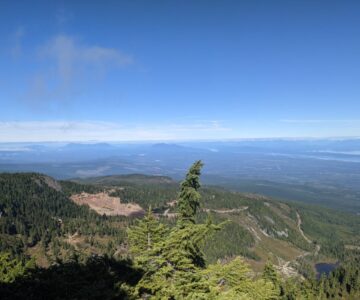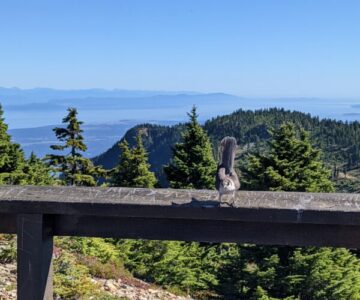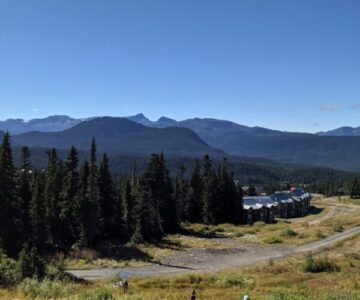Overview & Access to Strathcona Provincial Park
Welcome to Strathcona Provincial Park! This page will give you an overview of Strathcona Provincial Park. This includes access points, important information, resources for safe hiking, and trail maps for some of the best hikes on Vancouver Island!
There are two main access points to Strathcona Provincial Park; Paradise Meadows (including Forbidden Plateau) and Buttle Lake. The map below shows an overview of where the Strathcona Wilderness Institute (SWI) centres are located. The main highways of Vancouver Island are also outlined in blue. Use the top left corner of the map to can toggle on landmarks, ferries or other information centres on the island.
Maps & Resources
Strathcona Wilderness Institute has produced waterproof maps of the Forbidden Plateau area and of Buttle Lake. These maps are great for your adventures on the trail. Use the link below to check out our shop!
BC Parks Maps
BC Parks has several downloadable maps to help you get around Strathcona Provincial Park. Print them out and take them with you.
BC Parks Map of Strathcona Provincial Park
BC Parks General Information Page of Strathcona Provincial Park
Trail Maintenance Reporting
Strathcona Wilderness Institute (SWI) receives many complaints through its Information Centres about trail conditions in Strathcona Provincial Park. Trail maintenance is completed by BC Parks or 43k Wilderness Solutions. In order to help bring attention to maintenance concerns please fill out the linked form. SWI will submit the information to BC Parks on the publics behalf.
Photo upload is available but will require a Google account.
BC Parks Website - Notifications/Updates
BC Parks posts updates on the trail conditions and general information for Strathcona Provincial Park when time permits. Check the conditions and any other important updates, such as wildlife sightings, park closures and especially the latest on the Wildfires. The latest Report as of June 2023 is to be found here.
Hikes and Trails of Strathcona
Hiking Trail Map Colour Codes:
[★] EASY
[★★] MODERATE
[★★★] INTERMEDIATE
[★★★★] HARD
Included below is an assortment of amazing hikes and trails in Strathcona Provincial Park and the surrounding areas. Use the interactive map to explore Hiking Trails, Parking Lot Locations (Red Dots), Points of Interest, Campgrounds and much more. Select a trail on the map to view information about the hike or use the button in the top left corner to toggle between trails. Each trail on the map has a corresponding section further below which outlines important details about the hike. GPX Files are linked via GAIA GPS for those interested. More trails and information will be added in the near future.
Please Note: Use GPS tracks at your own discretion; it is possible that the GPS data may be inaccurate, competency and other navigational tools are needed. SWI is not responsible for any lost persons. Please use proper planning, check the weather, trail closures (BC parks website), and let someone know where you are going with an estimated time of return before hiking.
Paradise Meadows & Forbidden Plateau Trails
Paradise Meadows: Access to the following trails start from the Strathcona Park Wilderness Centre. Use Exit 130 on the Inland Island Highway 19 with signs headed for Mount Washington. Parking is available the beside the SWI Centre and the Raven Lodge Nordic Centre. The trail head has outhouses available but no garbage disposal.
Forbidden Plateau: Access to Forbidden Plateau is from the old ski area at Wood Mountain. The ski area has been closed down, however trails from here still connect to the Mount Washington Ski Area via Forbidden Plateau. Use Exit 127 on the Inland Island Highway 19 via Forbidden Plateau Road. Parking is available at the top of the gravel road. There are no washrooms or garbage disposal at the trail head.
Difficulty Level: Easy
Hike Type: Day Hike
Estimated Time (Leisure Hiking):
Loop: 1 Hour
Estimated Time (Experienced Hikers):
Loop: 0.5 – 1 Hour
Trail Stats: Loop from Parking Lot
Distance: 2.4km
Ascent: 20m
Descent: 20m
Trail Details and Important Information:
Centennial Loop trail provides easy access to view and enjoy Paradise Meadows. The trail is approximately half boardwalk with the remainder as well packed gravel with no steps. Please use caution as the boardwalks can be uneven and slippery. Wheelchairs and powerchairs can navigate the trail in most weather conditions.
Benches are scattered around the Centennial Loop to provide viewing areas of the beautiful meadows. Botanical information signs are also dispersed on the trail to mark important plant species that live in Strathcona Provincial Park.
Water Availability:
It is advisable to carry water on this hike, otherwise use a recognized filter water device to avoid water born diseases especially in the lakes as people and their dogs do swim in these.
Washrooms and Garbage:
This hike is a pack in, pack out hike. Therefore, no garbage disposal locations exist for either the parking lot or on the trail. Outhouses are available only at the start of the trail. Please do not throw garbage into the outhouses and always remember to LEAVE NO TRACE.
Pictures from the Trail
Difficulty Level: Easy
Hike Type: Day Hike
Estimated Time (Leisure Hiking):
Loop: 1 – 1.5 Hours
Estimated Time (Experienced Hikers):
Loop: 0.75 – 1 Hour
Trail Stats: Loop from Parking Lot
Distance: 3.5km
Ascent: 20m
Descent: 20m
Trail Details and Important Information:
The Paradise Meadows Loop Trail is an extension of the Centennial Loop Trail. This trail allows for further viewing of the beautiful Paradise Meadows. The trail is approximately half boardwalk with the remainder as well packed gravel with some rooted sections. There are steps on this trail that must be overcome. The Trail Rider Program has installed small metal ramps on each step to allow for better access for specifically designed wheelchairs. Please see the Strathcona Park TrailRider Program for more details. Please use caution as the boardwalks can be uneven and slippery.
Benches are scattered around the Paradise Meadows Trail Loop to provide viewing areas. Botanical information signs are also dispersed on the trail to mark important plant species that live in Strathcona Provincial Park.
Water Availability:
It is advisable to carry water on this hike, otherwise use a recognized filter water device to avoid water born diseases especially in the lakes as people and their dogs do swim in these.
Washrooms and Garbage:
This hike is a pack in, pack out hike. Therefore, no garbage disposal locations exist for either the parking lot or on the trail. Outhouses are available only at the start of the trail. Please do not throw garbage into the outhouses and always remember to LEAVE NO TRACE.
Photos from the Trial
Elevation Profile
Additional Maps
GPS Data & Waypoints
Trailhead (1,088m): 49.74518, -125.31925
Lake Helen Mackenzie – Day Use Area (1,140m): 49.72175, -125.32512
Lake Helen Mackenzie – Campground (1,444m): 49.72101, -125.31439
Battleship Lake – Day Use Area (1,167m): 49.72787, -125.31173
Difficulty Level: Moderate
Hike Type: Day Hike
Estimated Time (Leisure Hiking):
Loop: 2.5 – 3.5 Hours
Estimated Time (Experienced Hikers):
Loop: 1.5 – 2 Hours
Trail Stats: Loop from Parking Lot
Distance: 8.6km
Ascent: 150m
Descent: 150m
Trail Details and Important Information:
The trail to Helen Mackenzie and Battleship Lake is a great half day hike or a full day event. Both lake shores are perfect spots to spend time enjoying the park or having lunch. The trail is maintained to a high standard with lots of bridges and board walks. However, the trail does have many steps and uneven walking surfaces. The main lake shore areas on both Helen Mackenzie and Battleship Lake have outhouses available. Camping is available near the eastern shore of Lake Helen Mackenzie.
Water Availability:
It is advisable to carry water on this hike, otherwise use a recognized filter water device to avoid water born diseases especially in the lakes as people and their dogs do swim in these.
Washrooms and Garbage:
This hike is a pack in, pack out hike. Therefore, no garbage disposal locations exist for either the parking lot or on the trail. Outhouses are available at the parking lot and along the trail in select locations. Please do not throw garbage into the outhouses and always remember to LEAVE NO TRACE.
Washrooms, bear caches, dish washing sinks, and 10 campsites are located at Lake Helen Mackenzie for overnight camping. Camping fees are paid at the trail head for overnight users.
Elevation Profile
Additional Maps
GPS Data & Waypoints
Trailhead (1,088m): 49.74518, -125.31925
Turnoff – Lake Helen Mackenzie (1,140m): 49.72175, -125.32512
Turnoff – Kwai Lake (1,258 m): 49.70152, -125.33986
Circlet Lake Campground (1,217m): 49.69653, -125.37700
Difficulty Level: Intermediate
Hike Type: Day Hike/Multi-Day Hike
Estimated Time (Leisure Hiking):
One Way: 3.5 – 4 Hours
Out & Back: 7+ Hours
Estimated Time (Experienced Hikers):
One Way: 3 Hours
Out & Back: 6 Hours
Trail Stats: Parking Lot – Circlet Lake (One Way)
Distance: 10.6km
Ascent: 350m
Descent: 250m
Trail Details and Important Information:
The trail to Circlet Lake follows the main route from the Mt. Washington SWI Centre Parking Lot. The initial section of the trail to Lake Helen Mackenzie consists of well packed gravel and boardwalk. From Lake Helen Mackenzie the trail follows signs for Circlet Lake as the trail wraps around the base of Mount Allan Brooks. This section of trail is very uneven with lots of roots and tripping hazards. Just before descending to Kwai Lake the trial turns off towards the route for Mount Albert Edward. Circlet Lake marks a major overnight destination for many of the multi-day hikes that exist further into the park. Expect at least 3 hours of hiking without breaks to reach Circlet Lake from the Parking Lot.
Water Availability:
It is advisable to carry water on this hike. Use a recognized water filtration device to avoid water born diseases at Circlet Lake.
Washrooms and Garbage:
This hike is a pack in, pack out hike. Therefore, no garbage disposal locations exist for either the parking lot or on the trail. Outhouses are available at the parking lot and along the trail in select locations. Please do not throw garbage into the outhouses and always remember to LEAVE NO TRACE.
Washrooms, bear caches, dish washing sinks, and 60 tent pads are located at Circlet Lake for overnight camping. Camping fees are paid at the trail head for overnight users.
Elevation Profile
Additional Maps
GPS Data & Waypoints
Trailhead (1,088m): 49.74518, -125.31925
Turnoff – Lake Helen Mackenzie (1,140m): 49.72175, -125.32512
Turnoff – Kwai/Plateau Trail (1,204m): 49.69672, -125.33870
Turnoff – Plateau Trail/Cruickshank Canyon (1,191m): 49.69535, -125.34015
Cruickshank Canyon Lookout (1,164m): 49.68611, -125.34927
Difficulty Level: Intermediate
Hike Type: Day Hike/Multi-Day Hike
Estimated Time (Leisure Hiking):
One Way: 3.5 – 4 Hours
Out & Back: 7+ Hours
Estimated Time (Experienced Hikers):
One Way: 2.5 – 3 Hours
Out & Back: 5+ Hours
Trail Stats: Parking Lot – Cruickshank Canyon Lookout
Distance: 9.6km
Ascent: 270m
Descent: 170m
Trail Details and Important Information:
The trail to Cruickshank Canyon is similar in difficulty and length as hiking to Circlet Lake. It can be done as a long day hike or incorporated into an overnight camping trip at one of the campsites nearby (Circlet Lake or Kwai Lake). The trail ends at a rock bluff with great views of Castle Craig and the Comox Glacier further South. Unfortunately, the Cruickshank Valley below isn’t within the parks boundaries and the results of logging are seen below. Nevertheless, the lookout is an amazing spot to have lunch with spectacular views of the peaks nearby.
Water Availability:
It is advisable to carry water on this hike, otherwise use a recognized filter water device to avoid water born diseases especially in the lakes as people and their dogs do swim in these.
Washrooms and Garbage:
This hike is a pack in, pack out hike. Therefore, no garbage disposal locations exist for either the parking lot or on the trail. Outhouses are available at the parking lot and along the trail in select locations. Please do not throw garbage into the outhouses and always remember to LEAVE NO TRACE.
Elevation Profile
Additional Maps
GPS Data & Waypoints
Trailhead (1,088m): 49.74518, -125.31925
Turnoff – Lake Helen Mackenzie (1,140m): 49.72175, -125.32512
Kwai Lake Campground (1,199m): 49.69718, -125.33595
Turnoff – Battleship Lake (1,171m): 49.72018, -125.31089
Difficulty Level: Intermediate
Hike Type: Day Hike/Multi-Day Hike
Estimated Time (Leisure Hiking):
One Way: 2.5 Hours (Either Direction)
Loop: 5+ Hours
Estimated Time (Experienced Hikers):
Loop: 4 – 5 Hours
Trail Stats: Loop from Parking Lot
Distance: 15.7km
Ascent: 350m
Descent: 350m
Trail Details and Important Information:
The Kwai Lake Loop is a wonderful longer day hike that incorporates some of the best easily accessible hiking that Strathcona Provincial Park has to offer. Kwai Lake is also centrally located to many of the longer multi-day adventures and is a great overnight camping location for trails such as Mt. Albert Edward or the Plateau Trail. The Kwai Lake loop goes through the beautiful Murray Meadows and Paradise Meadows and host many spots with views towards Mt. Albert Edward and Castlecrag Mountain.
Water Availability:
It is advisable to carry water on this hike. Use a recognized water filtration device to avoid water born diseases at Kwai Lake.
Washrooms and Garbage:
This hike is a pack in, pack out hike. Therefore, no garbage disposal locations exist for either the parking lot or on the trail. Outhouses are available at the parking lot and along the trail in select locations. Please do not throw garbage into the outhouses and always remember to LEAVE NO TRACE.
Washrooms, bear caches, dish washing sinks, and 15 campsites are located at Kwai Lake for overnight camping. Camping fees are paid at the trail head for overnight users.
Photos from the Trial
Elevation Profile
GPS Data & Waypoints
Trailhead (726m): 49.66141, -125.16375
Plateau (1,005m): 49.65980, -125.18558
Mt. Becher (1,390m): 49.64992, -125.22343
Difficulty Level: Intermediate
Hike Type: Day Hike/Multi-Day Hike
Estimated Time (Leisure Hiking):
Out & Back: 6+ Hours
Estimated Time (Experienced Hikers):
One Way: 2 – 2.5 Hours
Out & Back: 4 – 5 Hours
Trail Stats: Parking Lot – Mt. Becher Summit (One Way)
Distance: 11km
Ascent: 700m
Descent: 0m
Trail Details and Important Information:
The hike up to Mt. Becher is one of the closest hikes to any main city surrounding Strathcona Provincial Park. The summit offers excellent views of Comox Glacier, Albert Edward and Mt. Washington. The accent additionally offers full panorama views of the Strait of Georgia.
Access:
The trailhead starts at the top of Forbidden Plateau Road, approximately a 30 minute drive from Courtenay. The drive up the mountain is on a gravel road with steep sections.
Trail Description:
The trail is a steep grind right from the beginning. Trail conditions range from loose gravel to roots and rock slopes. Once up into the subalpine the trail eases off in gradient for a nice stroll through the old Forbidden Plateau Ski Hill. One last grind will get you to the summit with views of the Comox Glacier a variety of peaks in Strathcona Provincial Park.
Water Availability:
Small ponds and streams may be found along the trail but animals (dogs) swim in these and they maybe contaminated. Use a water filter device. SWI Interactive Trail map indicates water source locations.
Washrooms and Garbage:
This hike is a pack in, pack out hike. No outhouses or garbage disposal locations exist for either the parking lot or on the trail. Always remember to LEAVE NO TRACE.
Elevation Profile
Additional Maps
GPS Data & Waypoints
Turnoff – Castlecrag/Plateau Trail (1,231m): 49.69421, -125.37693
Turnoff – Castlecrag Route/Summit (1,665m): 49.66100, -125.38806
Castlecrag Summit (1,765m): 49.66253, -125.38683
Mt. Frink Summit (1,948): 49.66318, -125.40844
Turnoff – Albert Edward/Circlet Lake (1,625m): 49.68950, -125.39768
Difficulty Level: Hard
Hike Type: Multi-Day Hike – Day Trip
Estimated Time (Experienced Hikers):
Circlet to Castlecrag (Clockwise): 3 – 3.5 Hours
Castlecrag to Circlet Lake (via Mt. Frink): 2.5 – 3 Hours
Trail Stats: Round Trip from Circlet Lake
Distance: 15km (Loop)
Ascent: 1000m
Descent: 1000m
Trail Details and Important Information:
The Castlecrag – Mt. Frink loop provides a demanding day adventure starting with an overnight stay at Circlet Lake. The loop can be done in either direction. The trail from Circlet to Castlecrag via Moat Lake (clockwise) is mostly a narrow single-track trail that can be easily followed through the subalpine forest. The trail can be quite steep with sections passing through previous landslide locations where the trail can be followed via rock cairns. Once you have circled around to the South side of Castlecrag, a short but steep trail leads to the summit. The summit has amazing views all around and can be a great stop for lunch. Watch out for the cliff edges!
The trail continues further towards Mt. Frink from here to the West. After leaving Castlecrag the trail will become less well marked and more exposed. The weather can change rapidly in the high alpine and visibility can be reduced within minutes. Be prepared for changing conditions and to navigate safely along the ridgeline. The trail continues to the summit of Mt. Frink marked as best possible via rock cairns. Beautiful panorama views of Albert Edward, Castlecrag, and Mt. George V can be seen from here to name a few. The descent back towards Circlet Lake follows the ridgeline to meet up with the Albert Edward trail.
Water Availability:
Once the camp at Circlet Lake is left, it is advisable to carry sufficient water for the whole day. Small ponds may be found along the trail but animals (dogs) swim in these and they maybe contaminated. Use a water filter device.
Washrooms and Garbage:
This hike is a pack in, pack out hike. Therefore, no garbage disposal locations exist for either the parking lot or on the trail. Outhouses are available at the parking lot and up to Circlet Lake. Beyond Circlet Lake no facilities exist. Please do not throw garbage into the outhouses and always remember to LEAVE NO TRACE.
Elevation Profile
Additional Maps
GPS Data & Waypoints
Trailhead (1,088m): 49.74518, -125.31925
Turnoff – Ridgeline/Circlet Lake (1,625m): 49.68950, -125.39768
Albert Edward Summit (2,093m): 49.67749, -125.43153
Difficulty Level: Hard
Hike Type: Day Hike/Multi-Day Hike
Estimated Time (Leisure Hiking):
Out & Back: 3 Days (Camping at Circlet Lake)
Estimated Time (Experienced Hikers):
One Way: 5 – 7 Hours
Out & Back: 11+ Hours
Trail Stats: Parking Lot – Mt. Albert Edward Summit (One Way)
Distance: 15.5km
Ascent: 1150m
Descent: 200m
Trail Details and Important Information:
Mt. Albert is one of the most recognizable peaks in Strathcona Provincial Park. This amazing hike is not to be underestimated and should be only attempted in good weather conditions! The normal approach to this hike is over the course of 3 days. The first night is spent either at Circlet Lake or Kwai Lake. The second day is a day trip to the summit and back from your camp. The third day is normally the hike out to the parking lot
Beyond Circlet Lake the hike becomes very steep. Once above the tree line cairns mark the trail as best possible. If the weather changes and visibility is reduced the trail may be impossible to follow. Hikers need to be properly prepared for any weather conditions and be able to navigate in low visibility.
Water Availability:
Once the camp at Circlet Lake is left it is advisable to carry sufficient water for the whole day. Small ponds may be found along the ridge but animals (dogs) swim in these and they maybe contaminated. Use a water filter device.
Washrooms and Garbage:
This hike is a pack in, pack out hike. Therefore, no garbage disposal locations exist for either the parking lot or on the trail. Outhouses are available at the parking lot and up to Circlet Lake. Beyond Circlet Lake no facilities exist. Please do not throw garbage into the outhouses and always remember to LEAVE NO TRACE.
Photos from the Trial
Coming Soon
Buttle Lake
The main access point to the Buttle Lake side of Strathcona Park is via Highway 28 which connects Campbell River and Gold River on the west coast of Vancouver Island. Follow Highway 19 North past Courtenay to Campbell River, then follow Highway 28 west for 48 km. Highway 28 passes through the northern section of the park and provides access to Buttle Lake. Gas and services are not available between Campbell River and Gold River.
Difficulty Level: Intermediate
Hike Type: Day Hike/Multi-Day
Estimated Time (Leisure Hiking):
One Way: 5+ Hours
Estimated Time (Experienced Hikers):
One Way: 4+ Hours
Trail Stats: Parking Lot – Landslide Lake (One Way)
Distance: 10.7km (One Way)
Ascent: 500m
Descent: 0m
Trail Details and Important Information:
The Elk River Trail weaves it’s way through one of the many amazing old growth forests in Strathcona Provincial Park. The trail follows the river up the valley to Landslide Lake which is surrounded by the 1000m massive walls of Mt. Colonel Foster just behind. The hike can be done as a daytrip or as an overnight camping trip. There are two camping locations, one at Butterwort Creek (6km from Trailhead) and the other at the Gravel Flats (10km from Trailhead). No camping is allowed at Landslide Lake. The trail continues around Landslide Lake to Foster/Berg Lake which is at the base of the East Face of Mt. Colonel Foster.
Iceberg Lake/Foster Lake:
A small addition to the Landslide Lake trail takes you right to the base of Mt. Colonel Foster. This trail is a much more technical single track path weaving along with edge of Landslide Lake. Expect an extra 45min to 1 hour to reach the Iceberg Lake.
Water Availability:
The trail meanders beside the river but it is recommended to carry water. It is advisable to use a recognized water filter device to avoid water born diseases.
Washrooms and Garbage:
This hike is a pack in, pack out hike. Therefore, no garbage disposal locations exist for either the parking lot or on the trail. Outhouses are available at the parking lot and along the trail in select locations. Please do not throw garbage into the outhouses and always remember to LEAVE NO TRACE.
Outhouses, bear caches, and a total of 20 campsites are available between the two designated camping areas. Camping fees are paid at the trail head for overnight users.
Difficulty Level: Hard
Hike Type: Day Hike
Estimated Time (Leisure Hiking):
One Way: 2.5 – 3 Hours
Out & Back: 6+ Hours
Estimated Time (Experienced Hikers):
One Way: 2 – 2.5 Hours
Out & Back: 4 Hours
Trail Stats: Parking Lot – Summit (One Way)
Distance: 6.6km (One Way)
Ascent: 1200m
Descent: 0m
Trail Details and Important Information:
The trail head starts from a small parking lot on Highway 28 and immediately crosses a narrow section of Drum Lake via a bridge. The steep trail is easily followed as it climbs up the side of Crest Mountain. However, early in the season the upper section of the trail can be buried under snow. The climb ends at a small lake near the top. From here a wonderful lookout can be reached by heading West to a rock bluff. This is a great spot to have lunch while looking out at Kings Peak and back towards Campbell River. The trail does continue further North, however views from the summit are limited.
Water Availability:
It is essential to carry water on this hike as there is only one stream that is crossed about half an hour into the hike. After the stream crossing there is none available until the small lake at the top is reached. Please filter water to avoid water born diseases especially in the lakes as people and their dogs do swim in these.
Washrooms and Garbage:
This hike is a pack in, pack out hike. No facilities exist for this hike. Please always remember to LEAVE NO TRACE.
Elevation Profile
Additional Maps
Difficulty Level: Hard
Hike Type: Day Hike/Multi-Day Hike
Estimated Time (To Ridgeline):
One Way (7.5km): 2-3 Hours
Estimated Time (To Central Crags):
Out & Back (29km): 1-3 Days
Trail Stats: Parking Lot – Central Crags (One Way)
Distance: 14.5km
Ascent: 1640m
Descent: 240m
Trail Details and Important Information:
Flower Ridge is one of Strathcona Provincial Parks most popular backcountry trails, especially on the Buttle Lake side of the park. The trail starts off with a continuous uphill climb for 7.5km where it then follows the ridgeline all the way to the Central Crags. From here the trail connects to the Henshaw Creek Divide and other backcountry routes. Flower Ridge offers incredible views of Mt. Myra, Mt. Septimus and much more. Most day hikers can reach the top of the ridgeline at approximately 7.5km from the trailhead. To hike further, overnight backcountry camping is normally required.
Water Availability:
It is advisable to carry water on this hike. Small creeks can be used as a water source on the climb up. The last creek for water on the ridgeline is at 3.3km from the trailhead. Once on the ridgeline (7.5km from Trailhead) there are scattered small ponds which can be used for drinking water. Use a recognized water filtration device to avoid water born diseases.
Camping, Garbage and Washrooms:
This hike is a pack in, pack out hike. Therefore, no garbage disposal locations exist for either the parking lot or on the trail. An outhouse is available at the parking lot (See Trails of Strathcona Provincial Park Map).
No designated campsites exist on Flower Ridge trail as this is considered a backcountry area. Please always remember to LEAVE NO TRACE when picking a campsite and moving through the backcountry.
Directions:
Google Maps Link
A parking lot is located directly off the side of Westmin Road as you travel along side Buttle Lake.
Elevation Profile
Additional Maps
GPS Data & Waypoints
Trailhead (386m): 49.57460, -125.61216,
Arnica Lake Camp (1,197m): 49.59436, -125.61812
Carter Col (1,399 m): 49.61565, -125.69705
Burman Lake Camp (1,324m): 49.64182, -125.73701
Golden Hinde Summit (2,195m): 49.66273, -125.74698
Difficulty Level: HARD
– South Approach
Hike Type: Multi-Day Hike
Estimated Time (Experienced Hikers):
Out & Back: 3-6 Days
Trail Stats: Parking Lot – Summit (One Way)
Distance: 28km
Ascent: 2500m
Descent: 900m
Trail Details and Important Information:
Golden Hinde marks basically the centre point of the Strathcona Provincial Park. On a clear day from the summit you can see the Pacific Ocean on both sides of Vancouver Island along with a full panorama of other peaks surrounding you.
Access Point: The trailhead starts at the end of Western Mines Road at the South end of Buttle Lake (Link to Google Map Directions). To reach this point you will have to drive through the Myra Falls Mine Site. The public is allowed through but you may have to wait for mine personnel to grant you access. The trailhead and parking lot are clearly marked on the right hand side of the road past the mine site. Follow signs for Phillips Ridge and Arnica Lake.
Trail Description: The overall trail can be broken down into three main sections. There are many additional backcountry camping options for places to spend the night (see below). Most hikers complete this trip in 4-5 Nights but many other backcountry routes link to this trail for other hiking options.
Part 1 – Trailhead to Arnica Lake:
The trail to Golden Hinde (follows Phillips Ridge trail) starts off with a 7.5km grind up switchbacks to Arnica Lake. There are a two main water sources along the way if needed. Arnica Lake is a great location for camping the first night especially if you had a long drive to reach the trail. There are 4 tent pads located at the lake along with a bear cache for storing food and a basic pit toilet. Additionally, there are few reasonable camping locations around the lake that can serve as overflow tenting areas.
Part 2 – Arnica Lake to Burman Lake
This section is approximately 17km in length and traverses across valleys, meadows and ridgelines to reach Burman Lake. Water sources are spaced apart so be sure to know where your next source is and carry enough water. Once beyond Arnica Lake the trail is no longer maintained by BC Parks and from here GPS navigation is highly recommended. As the trail works it’s way up to Phillips Ridge you will get your first views of the surrounding peaks and Golden Hinde itself. Gravel camping pads are scattered along the ridgeline, a few recommended spots are located right beside the summit of Phillips Ridge.
Once past the summit of Phillips ridge the trail works it’s way down to Carter Lake. The trail leaves the ridgeline at Carter Col (a separating point between the route that connects to Marble Meadows) and steeply descends back into the forest. Next up are two larger lakes that the trail navigates around, Carter Lake and Schjelderup Lake. Both have good camping options. Finally there is one last ascent to reach the Burman Lake ridgeline. Summit attempts can be made from Schjelderup Lake (North) but camping further along the trail closer to Burman Lake is most common.
Part 3 – Burman Lake to Golden Hinde Summit
Normally this section is done as a day trip from one of the Burman Lake Ridgeline camping locations. The first section of the trail goes down to the elevation of Burman Lake and then climbs back up. One last source of water is located at the base of the rock scramble before you start your climb. There are multiple routes up to the summit of Golden Hinde. The least difficult is from the Southeast Couloir (route shown on map). This section can be very exposed. A UIAA certified mountaineering helmet is recommended along with GPS navigation. Descending safely may also require the use of ropes.
Water Availability:
It is advisable to carry water on this hike. A few small creeks can found as you begin your assent up to Arnica Lake. Beyond this point most of the drinking water is from lakes and small ponds. See Trails of Strathcona Provincial Park Map for locations of important water sources. Use a recognized water filtration device to avoid water born diseases.
Camping, Garbage and Washrooms:
This hike is a pack in, pack out hike. Therefore, no garbage disposal locations exist for either the parking lot or on the trail. Outhouse are available at the Trailhead and at Arnica Lake Campground .
The majority of this area is all backcountry camping. Arnica Lake has a couple tent pads. See the interactive map Trails of Strathcona Provincial Park for other suggested backcountry camping locations. The most popular locations are Arnica Lake and above Burman Lake.
Please always remember to LEAVE NO TRACE when picking a campsite and moving through the backcountry.
Surrounding Area & All Other Trails
The area surrounding Strathcona Provincial Park is home to many other great trails. The following are a few trails relatively close to the main access points of Strathcona Provincial Park. These trails are not maintained by BC Parks and may not be within provincial park boundaries.
Difficulty Level: Hard
Hike Type: Day Hike
Estimated Time (Leisure Hiking):
One Way: 1 – 2 Hours
Out & Back: 3+ Hours
Estimated Time (Experienced Hikers):
One Way: 0.75 – 1 Hours
Out & Back: 2+ Hours
Trail Stats: Mt. Washington Summit (One Way)
Distance: 1.7km
Ascent: 310m
Descent: 0m
Trail Details and Important Information:
The trail up Mt. Washington in the summer can be done once the snow has melted. A gravel road runs up the mountain providing the main route up. The route shown on the map is steep right from the start. The trail is not maintained as a hiking trail so expect uneven footing and challenging terrain. From the top multiple amazing lookouts and viewpoints are available to view out into Strathcona Provincial Park or out towards the Strait of Georgia.
Water Availability:
Always carry water as there is none available along the route.
Washrooms and Garbage:
This hike is a pack in, pack out hike. Washrooms and Garbage may be available depending on if the Mount Washington Skiing Alpine Resort is open to the public. Please remember to LEAVE NO TRACE.
